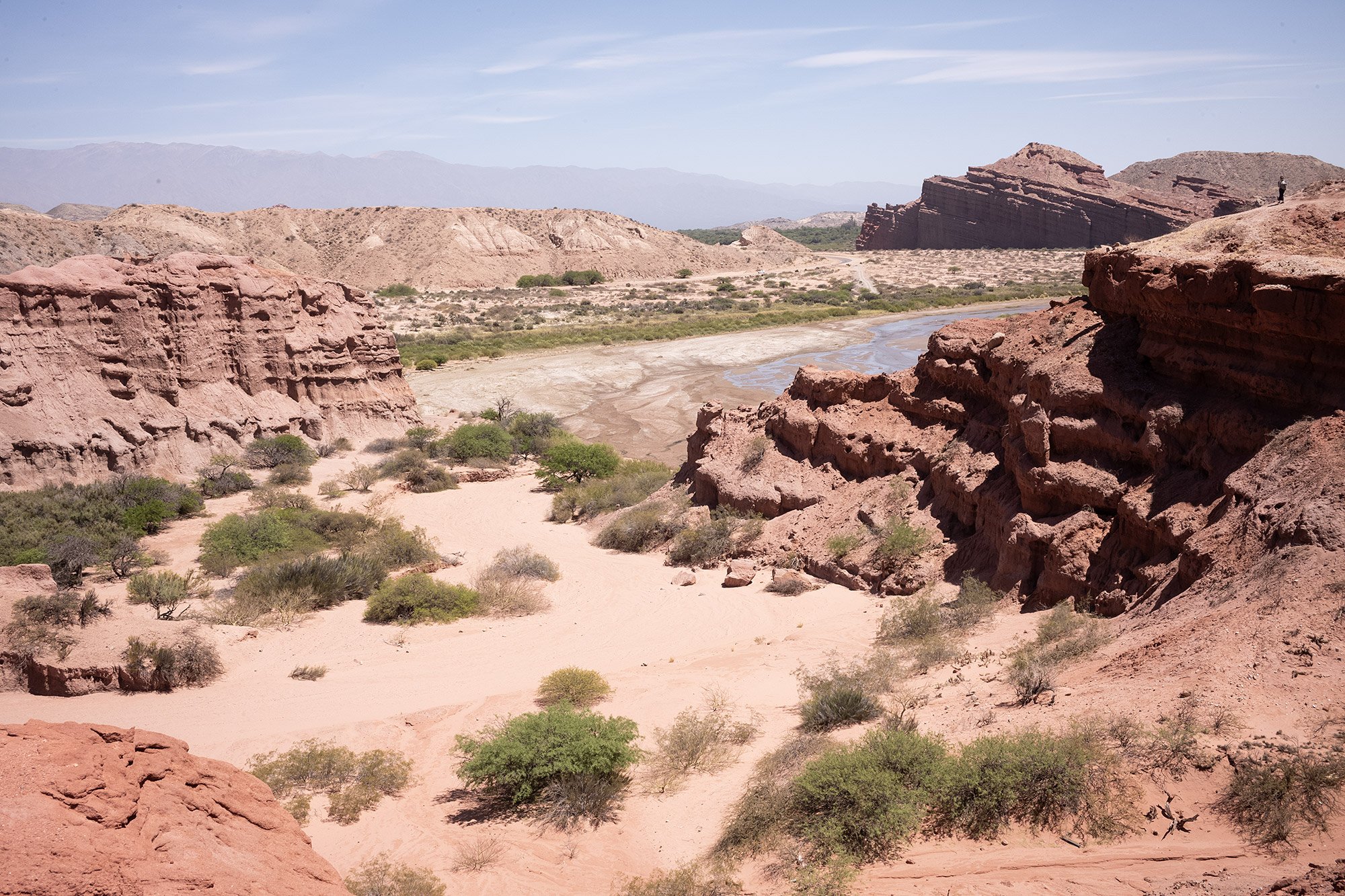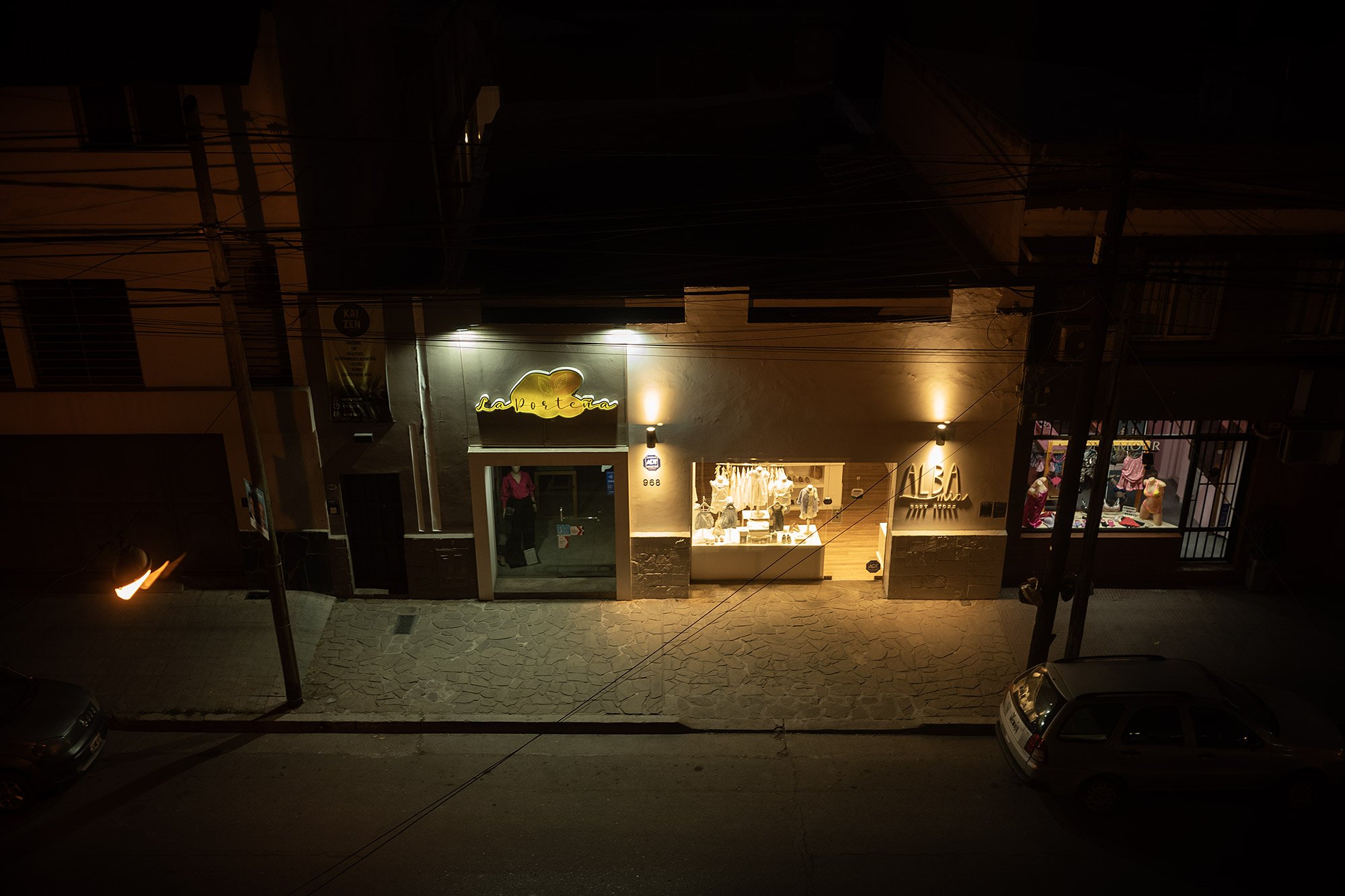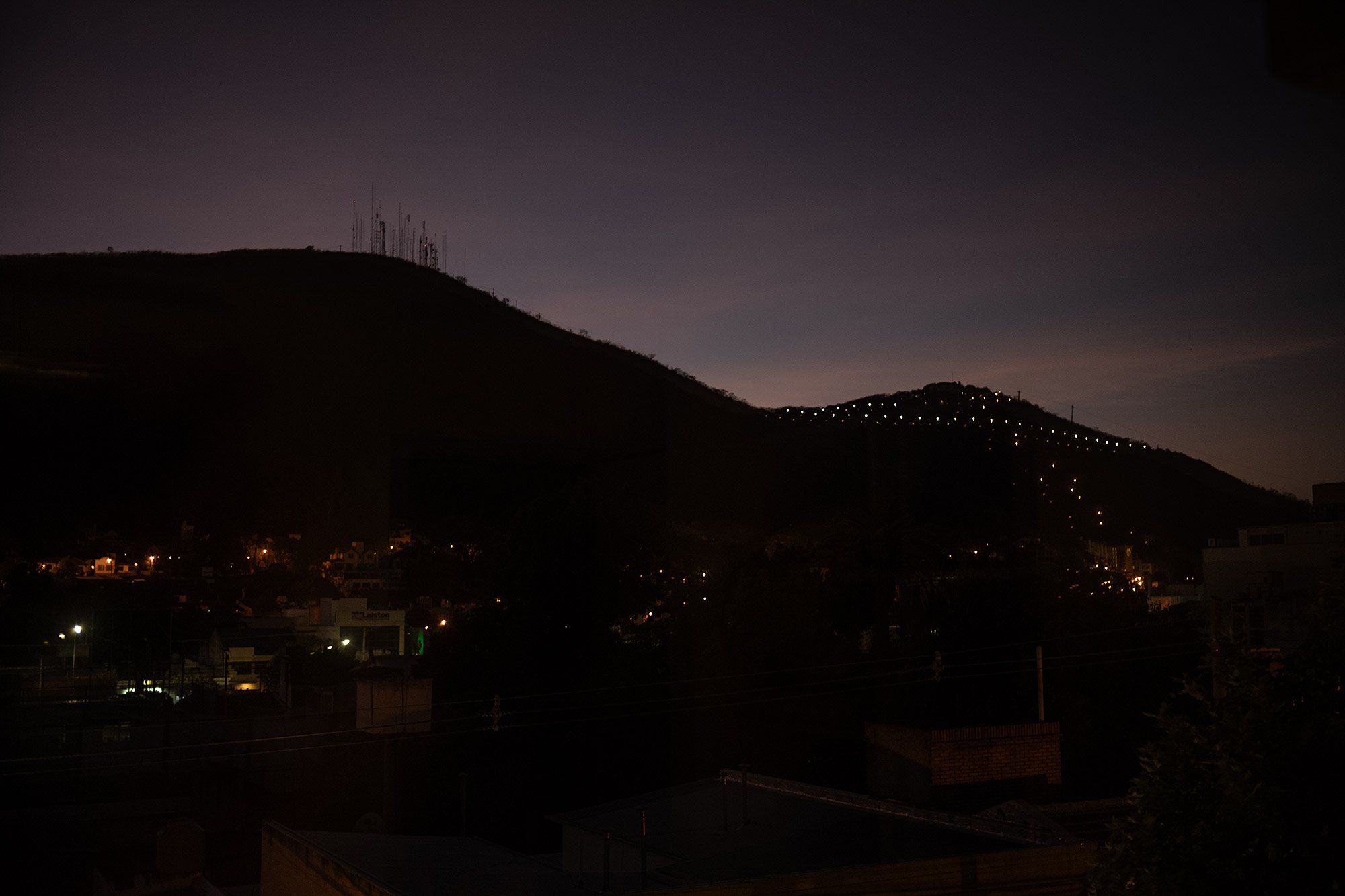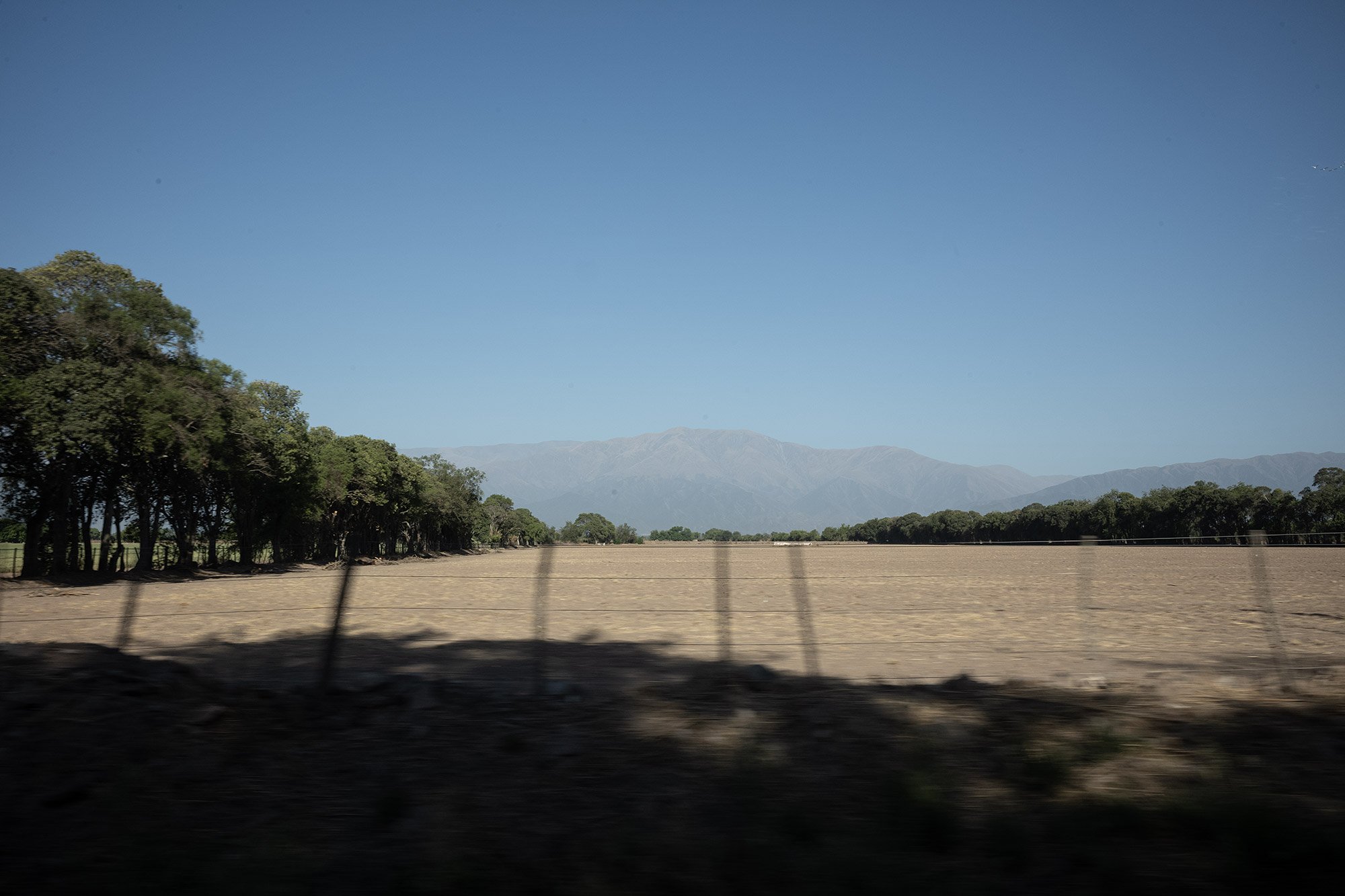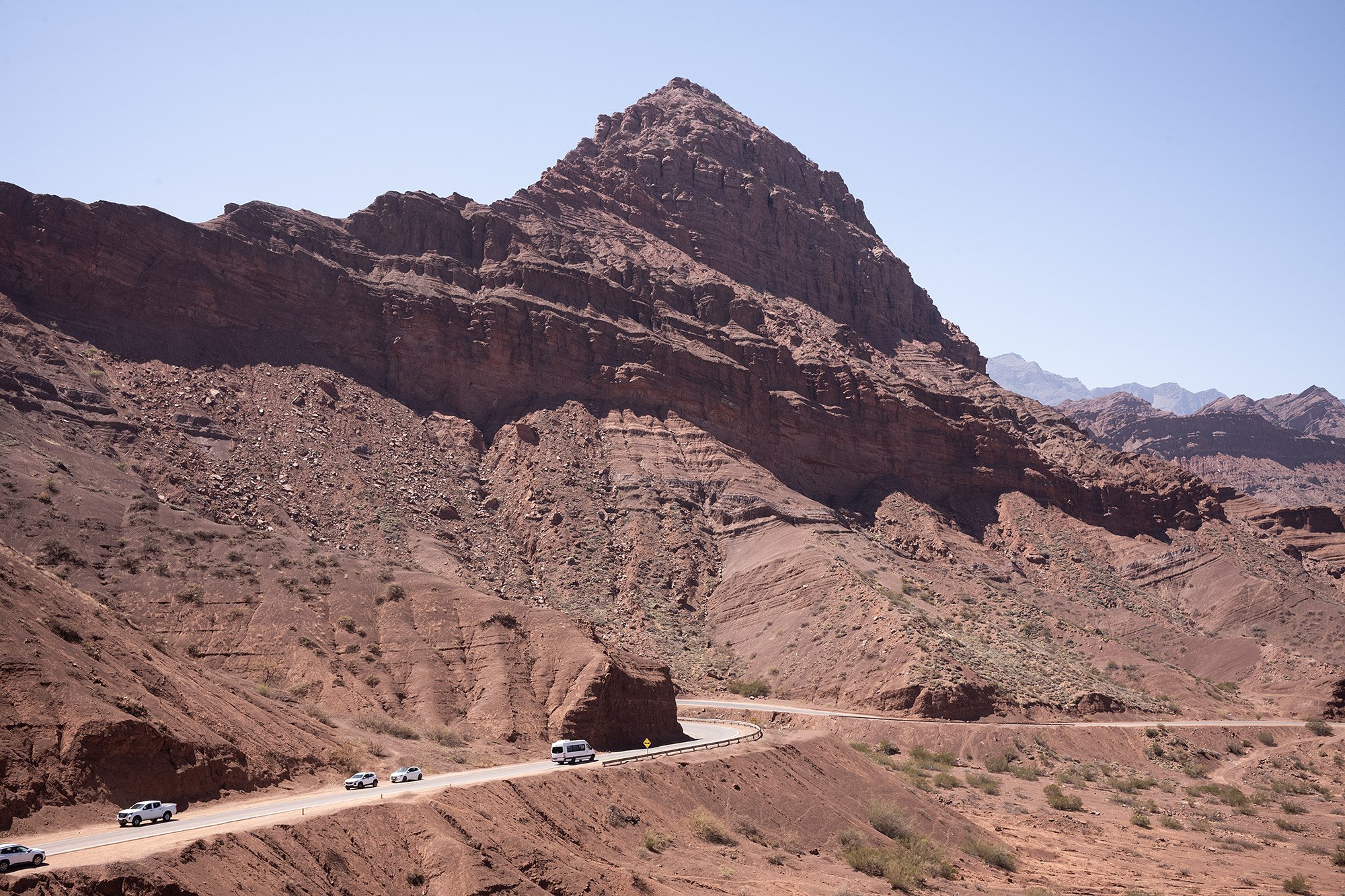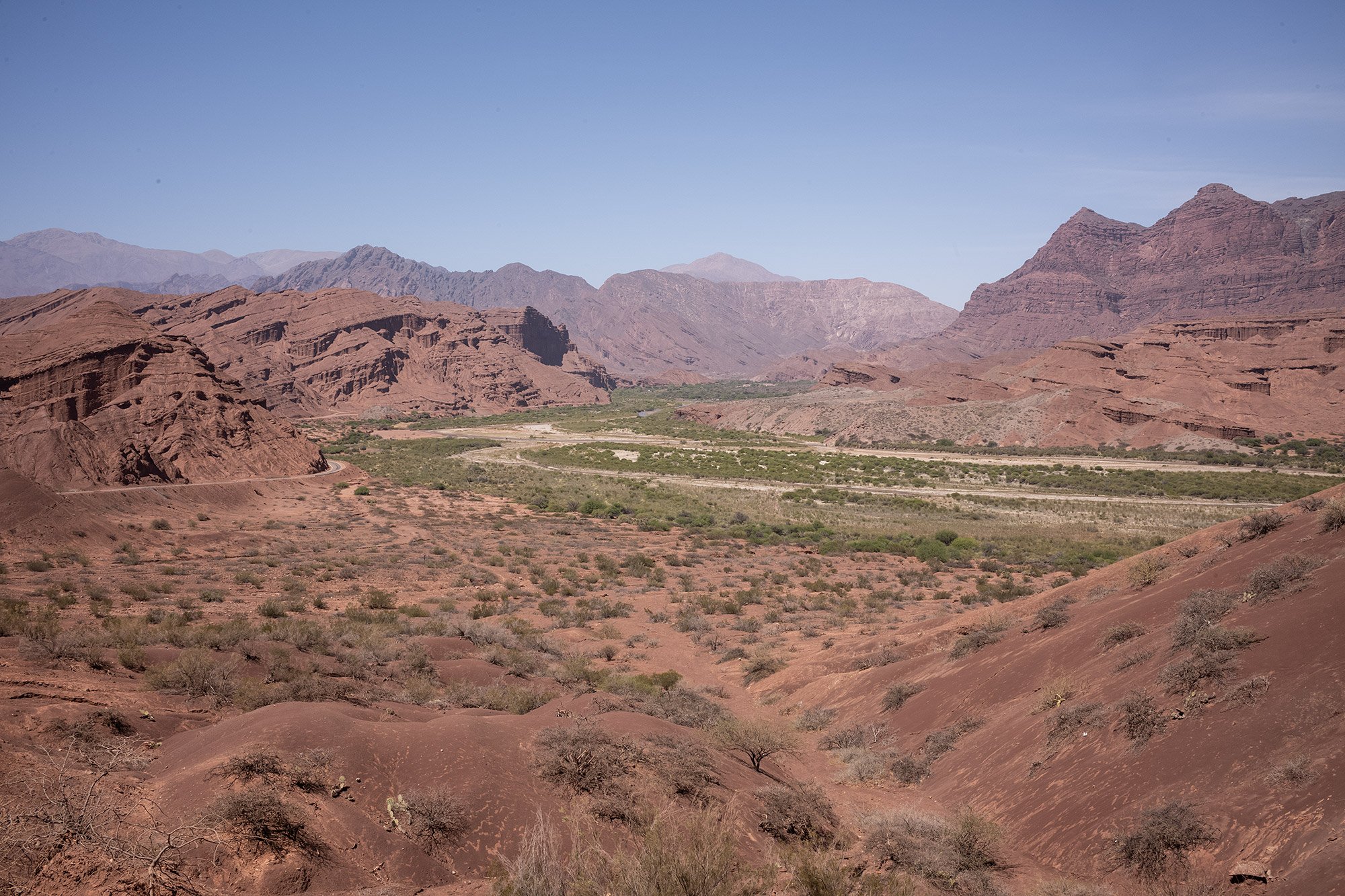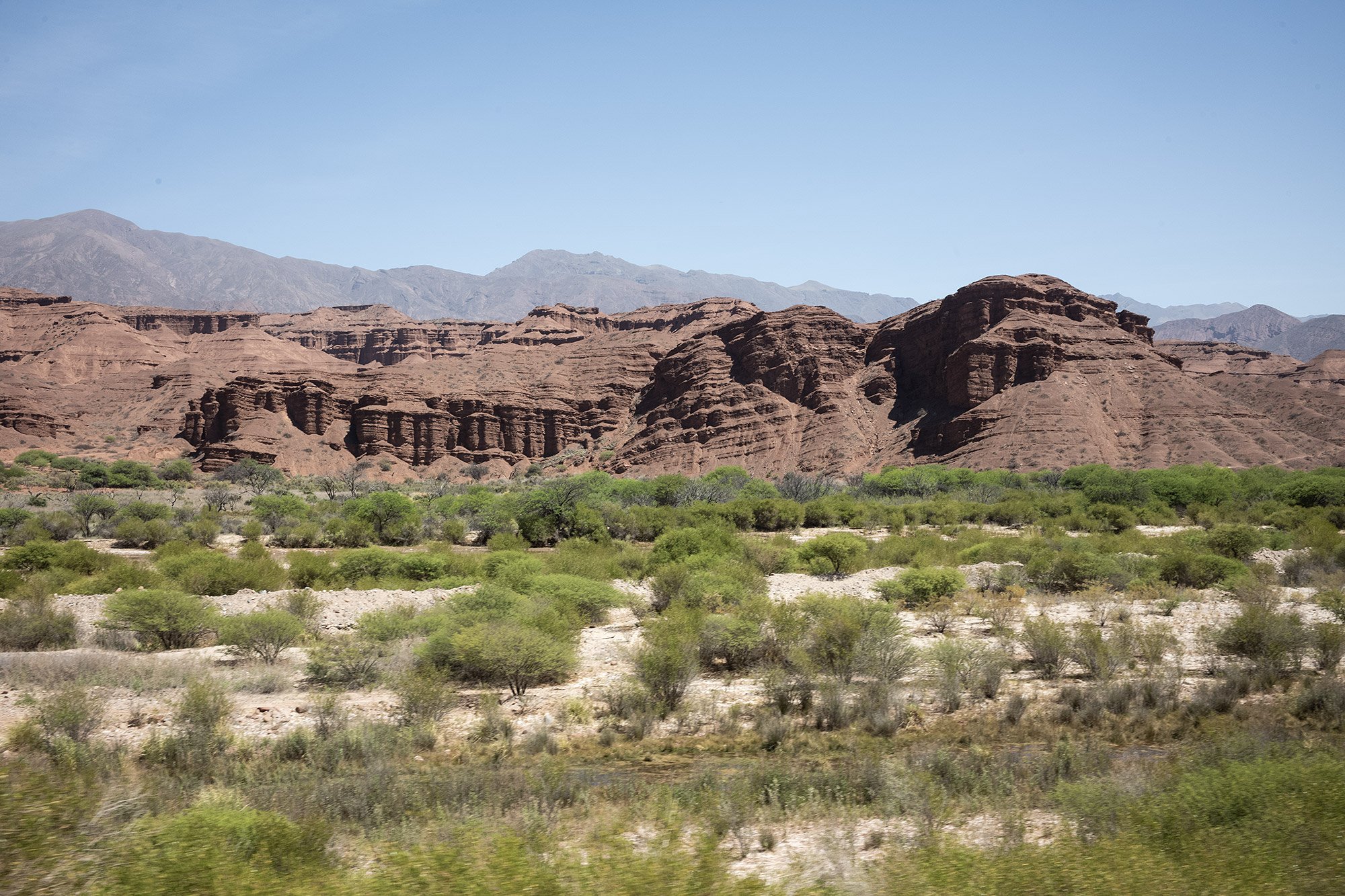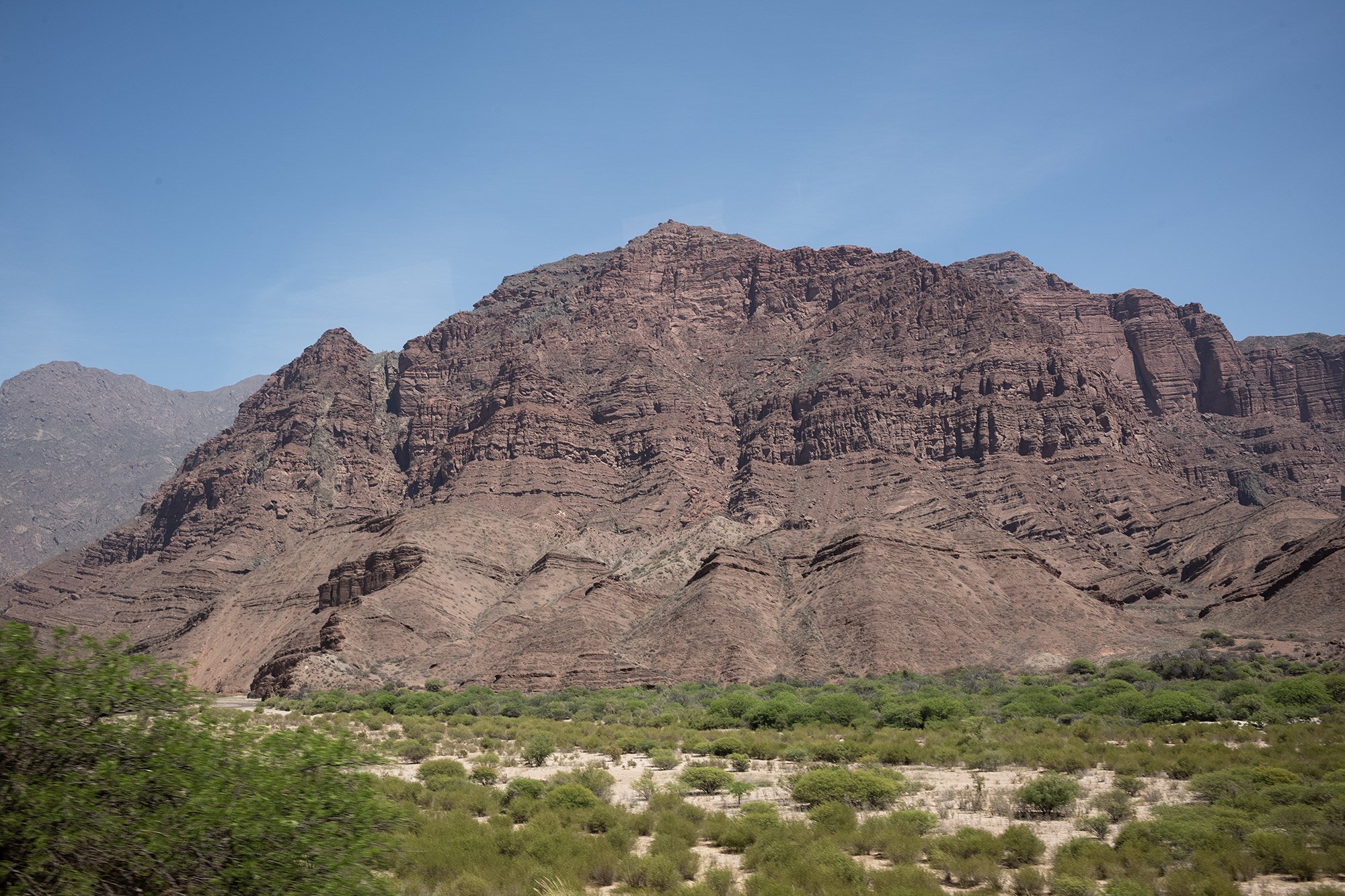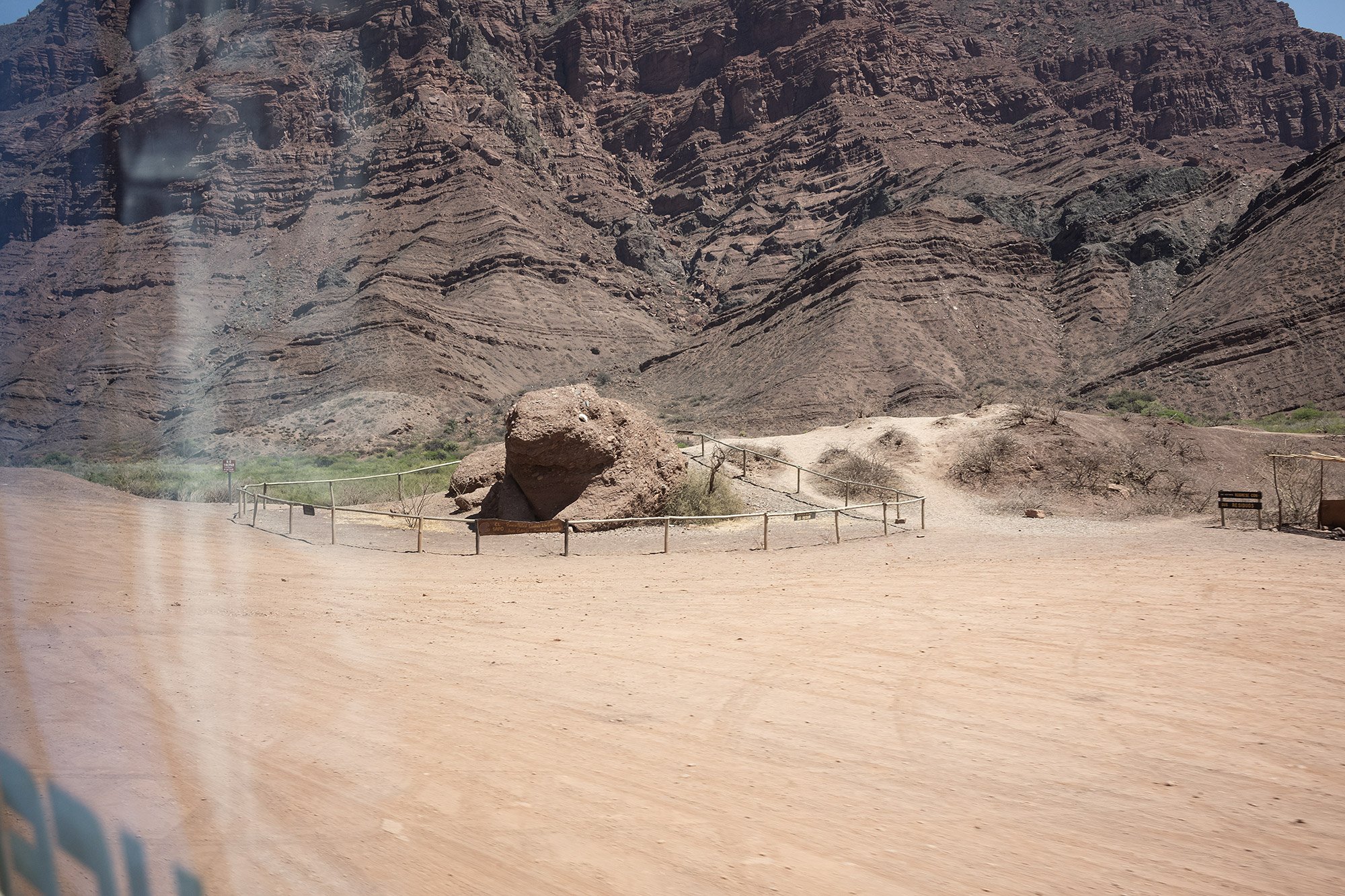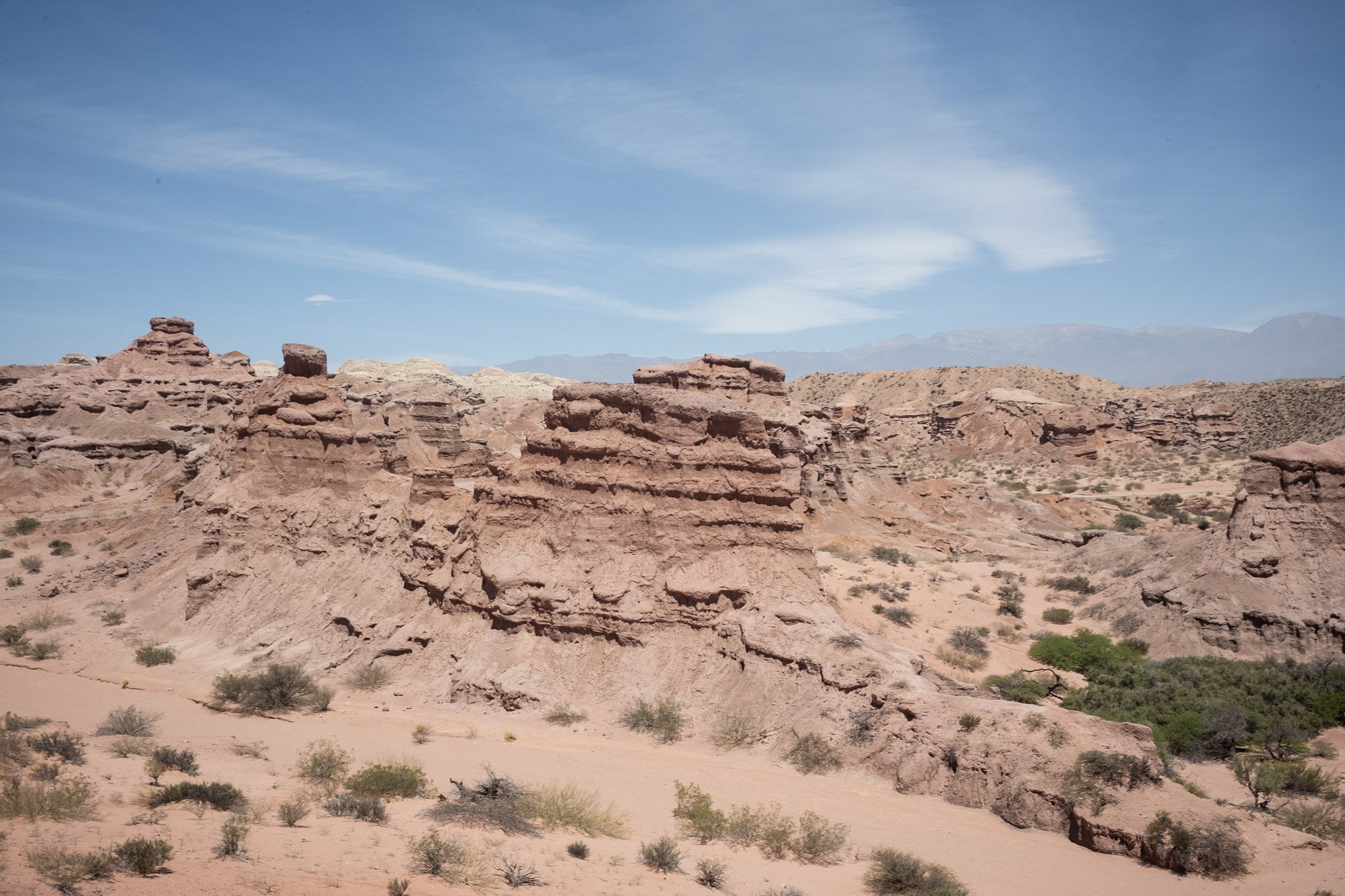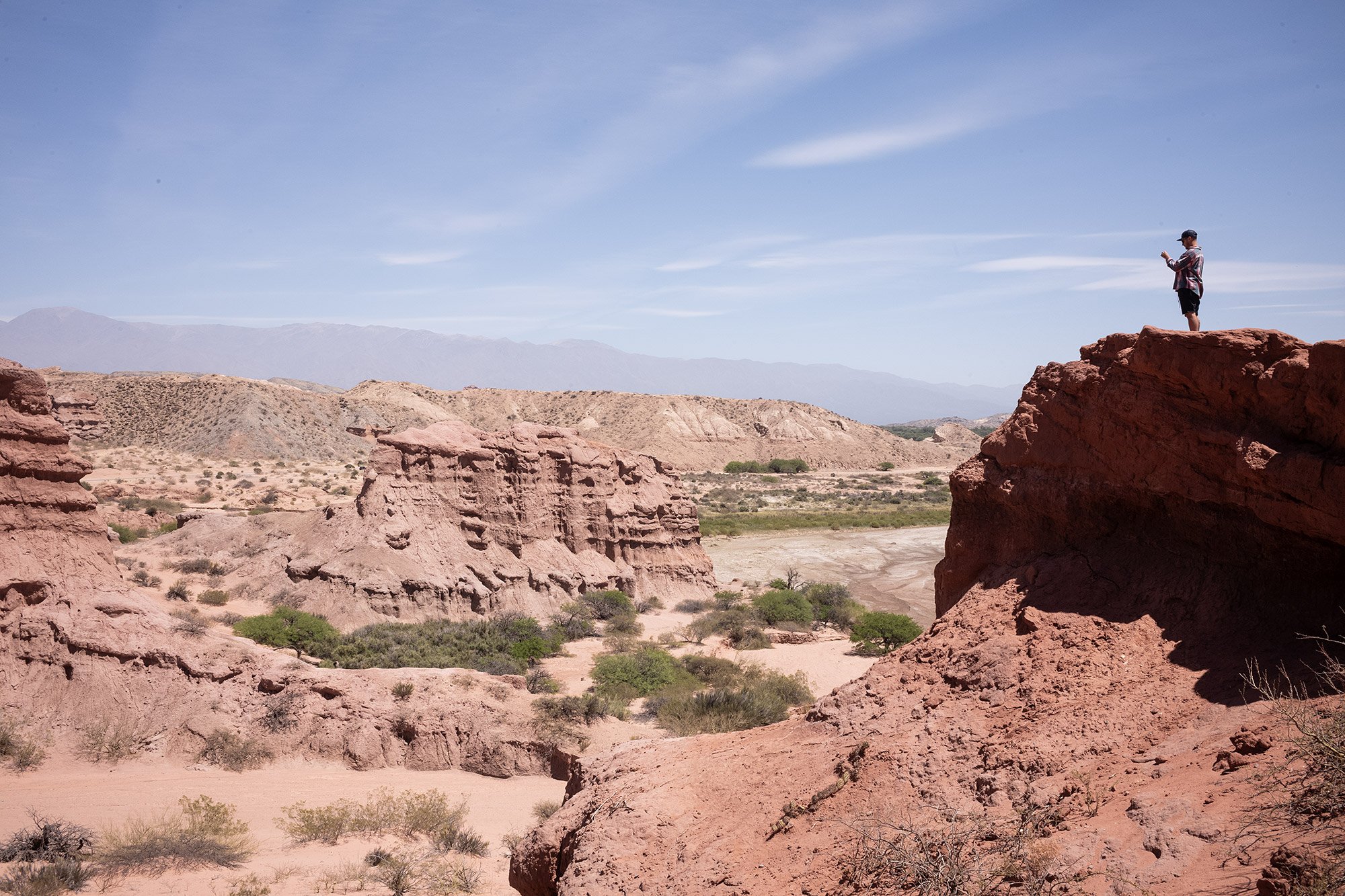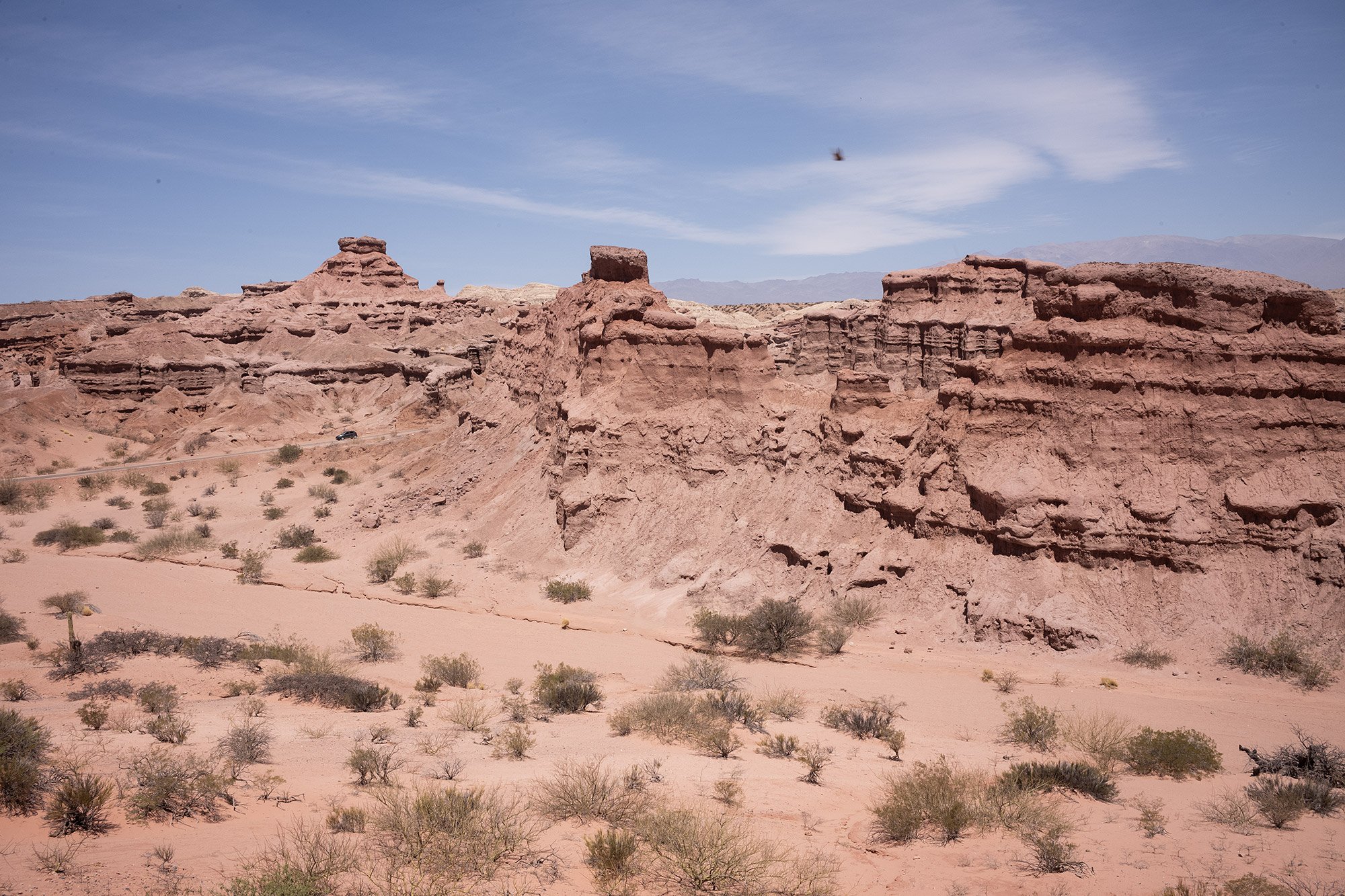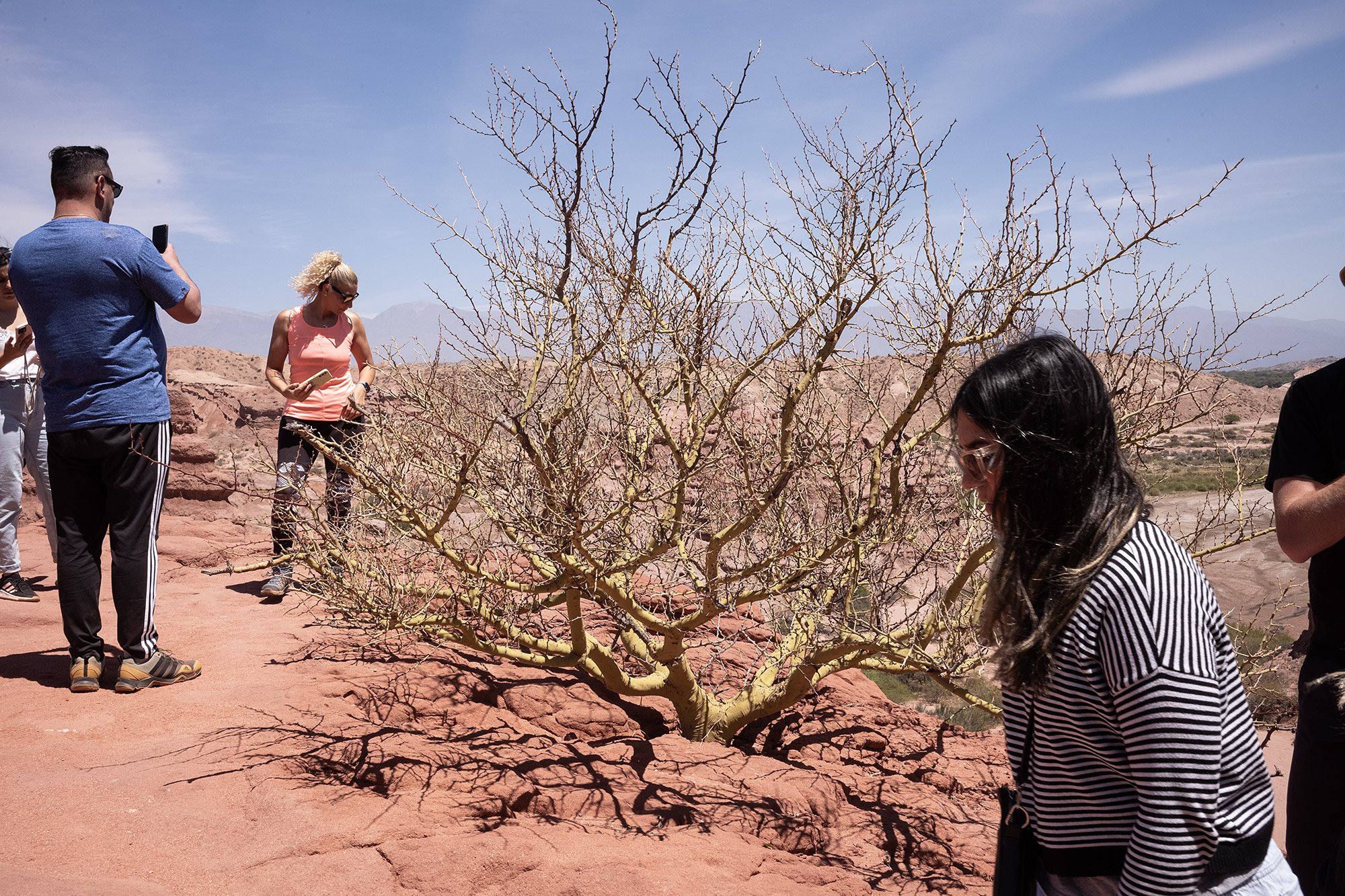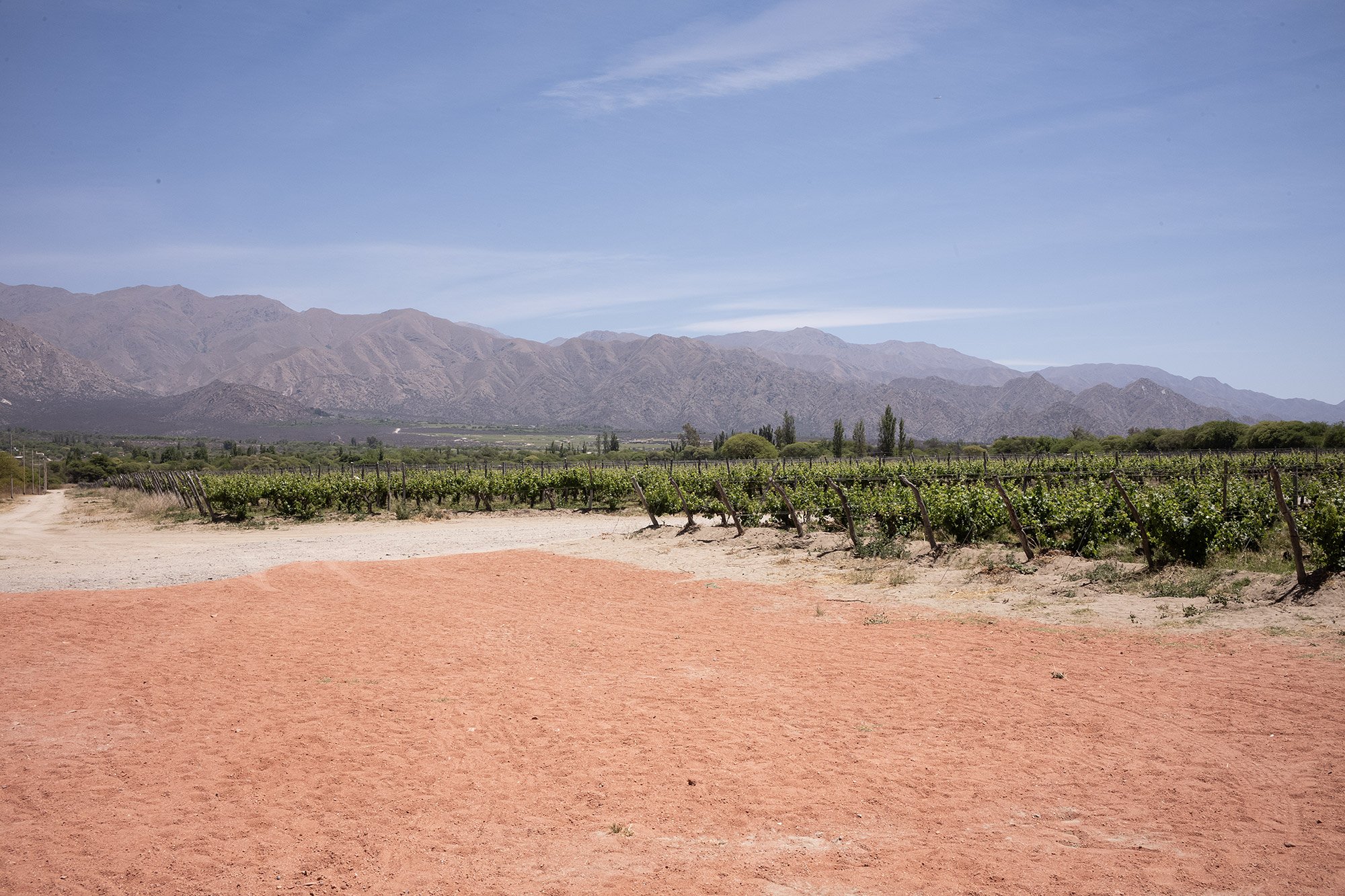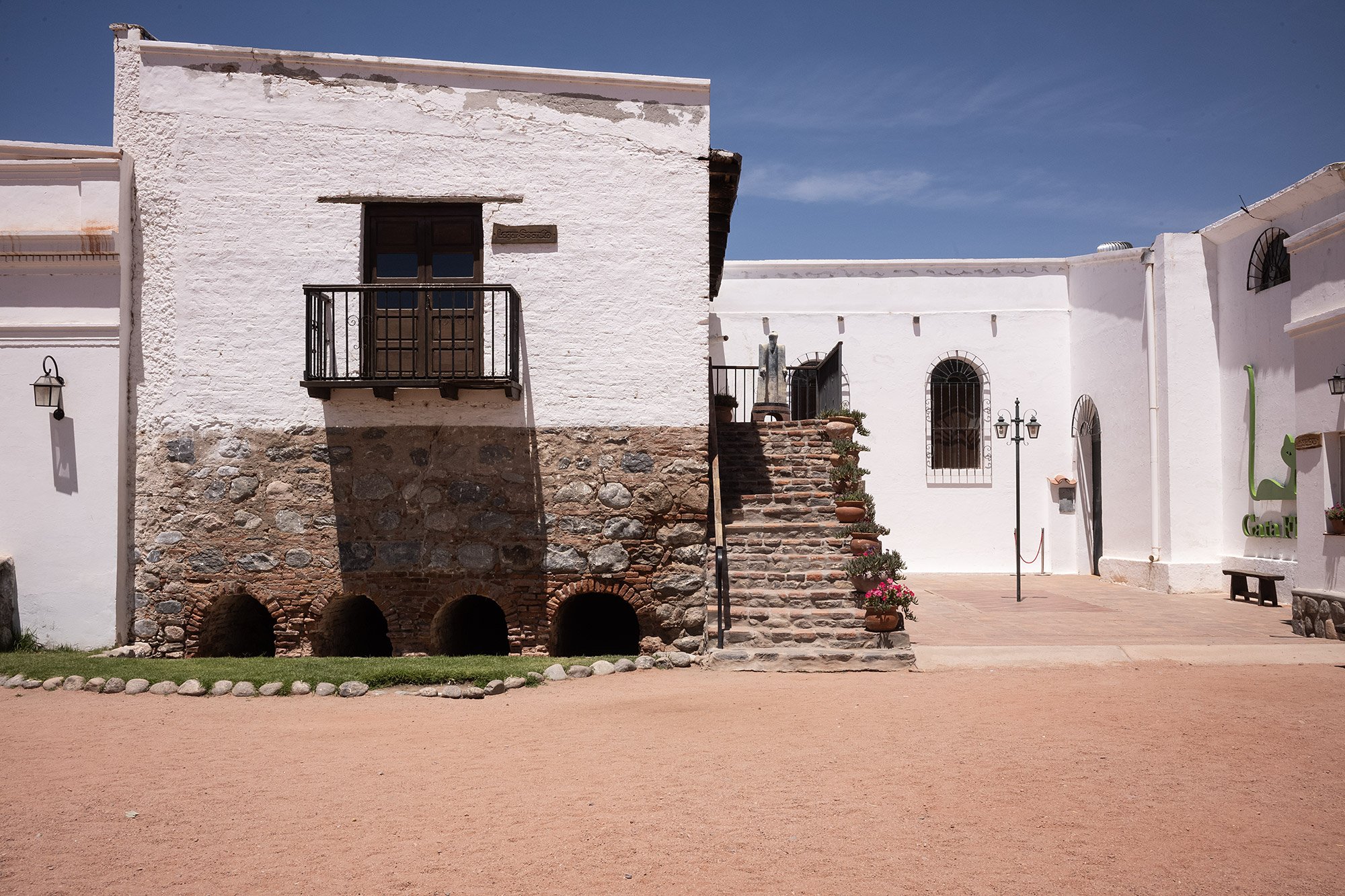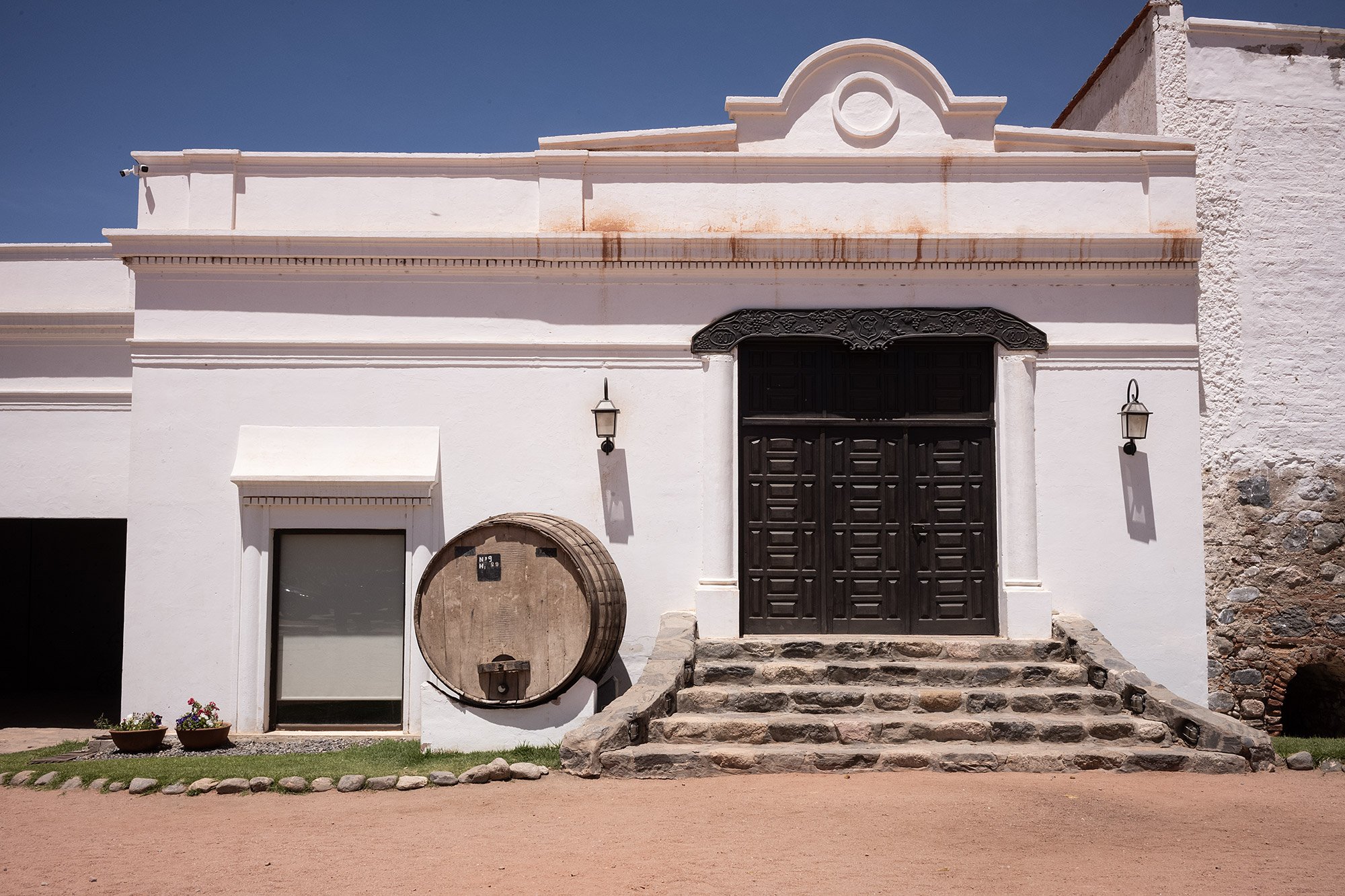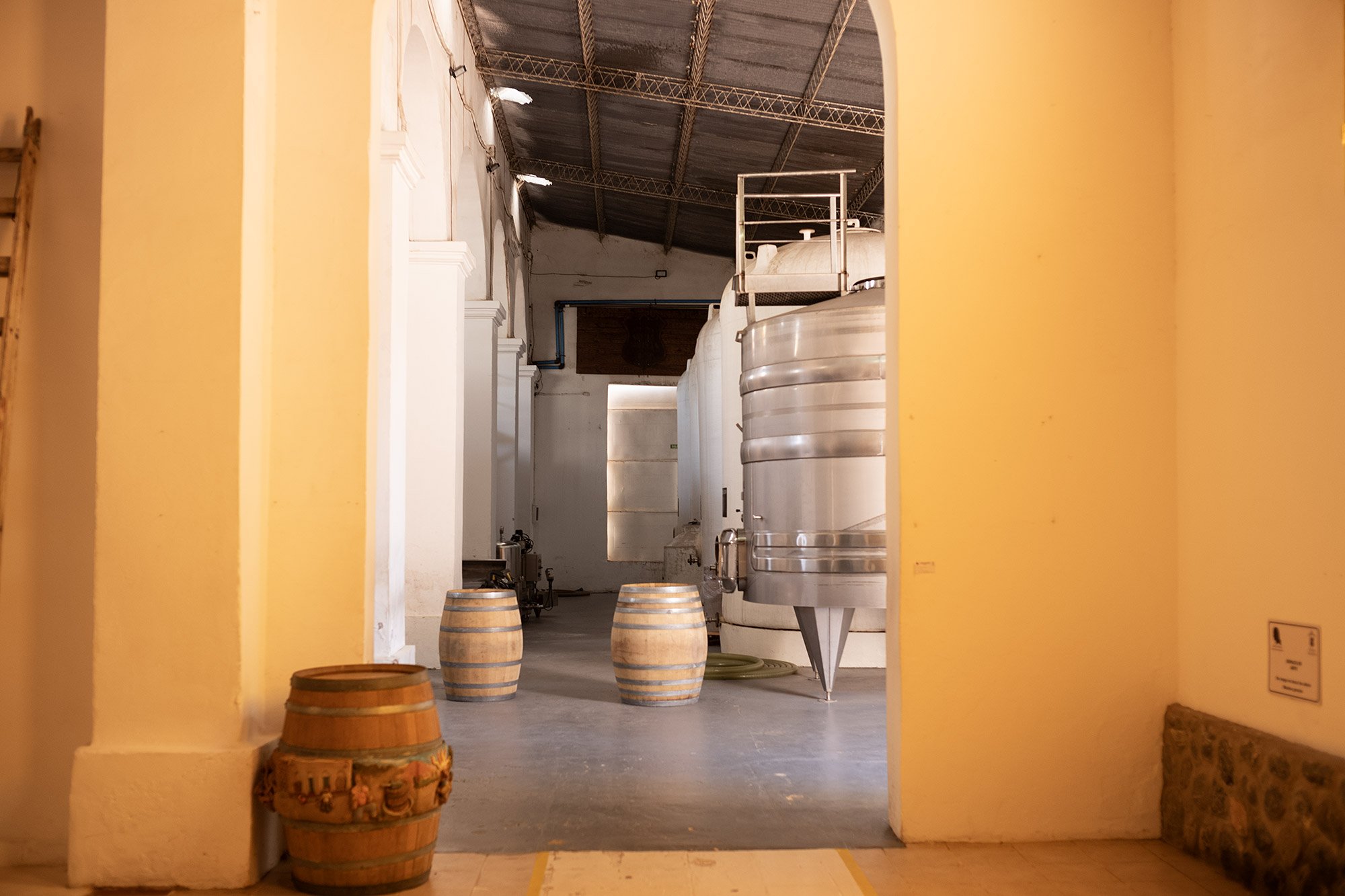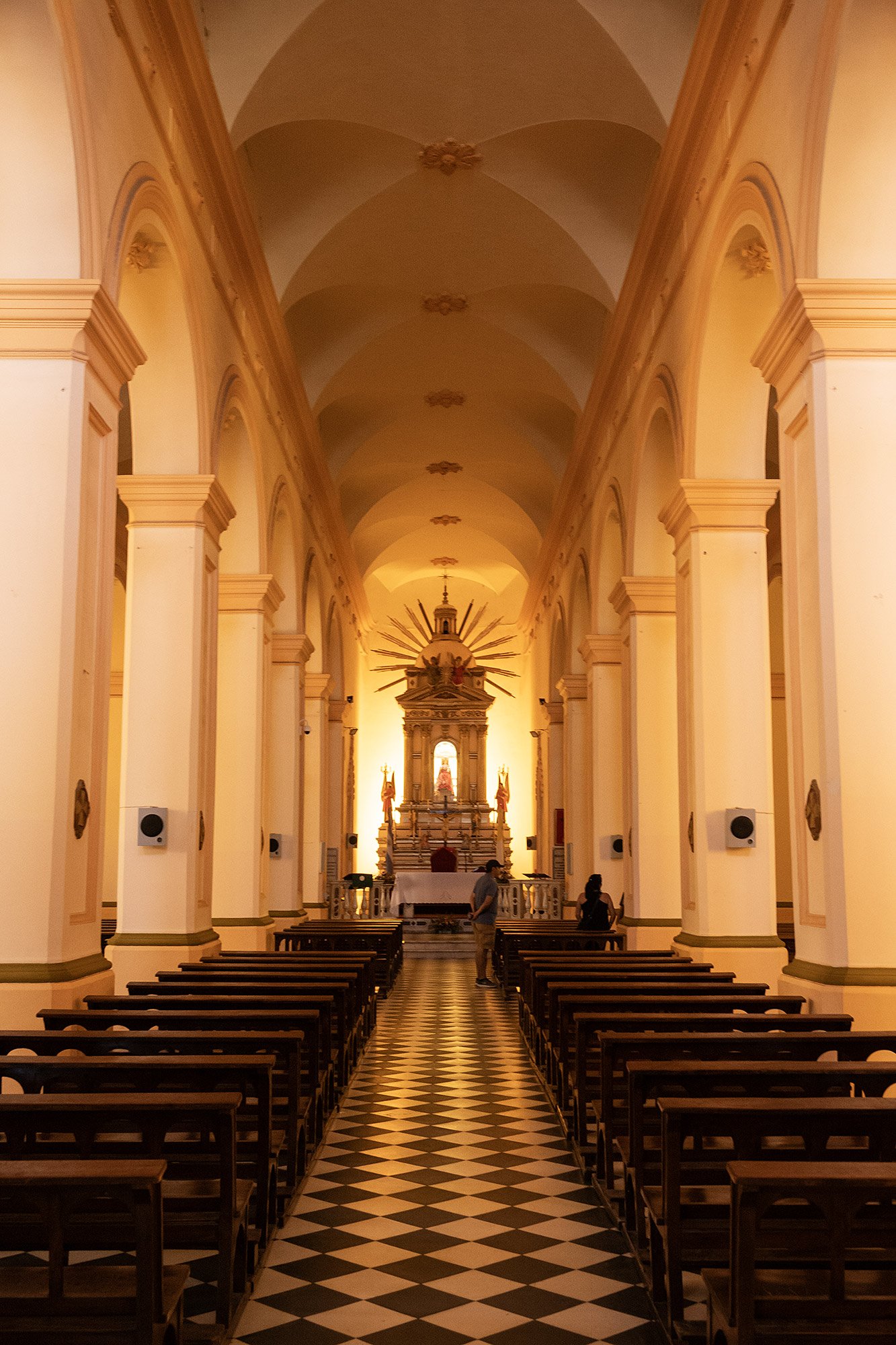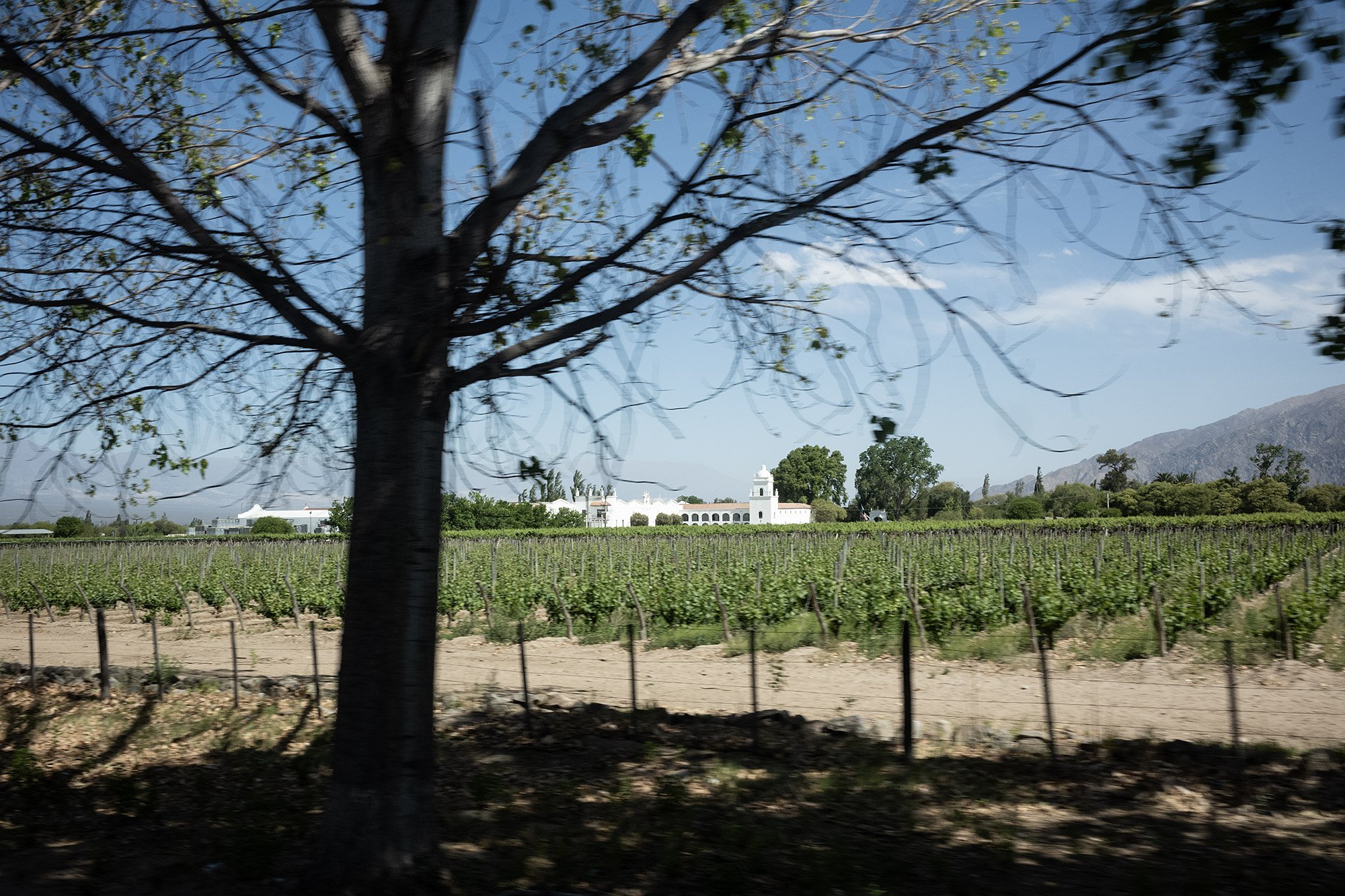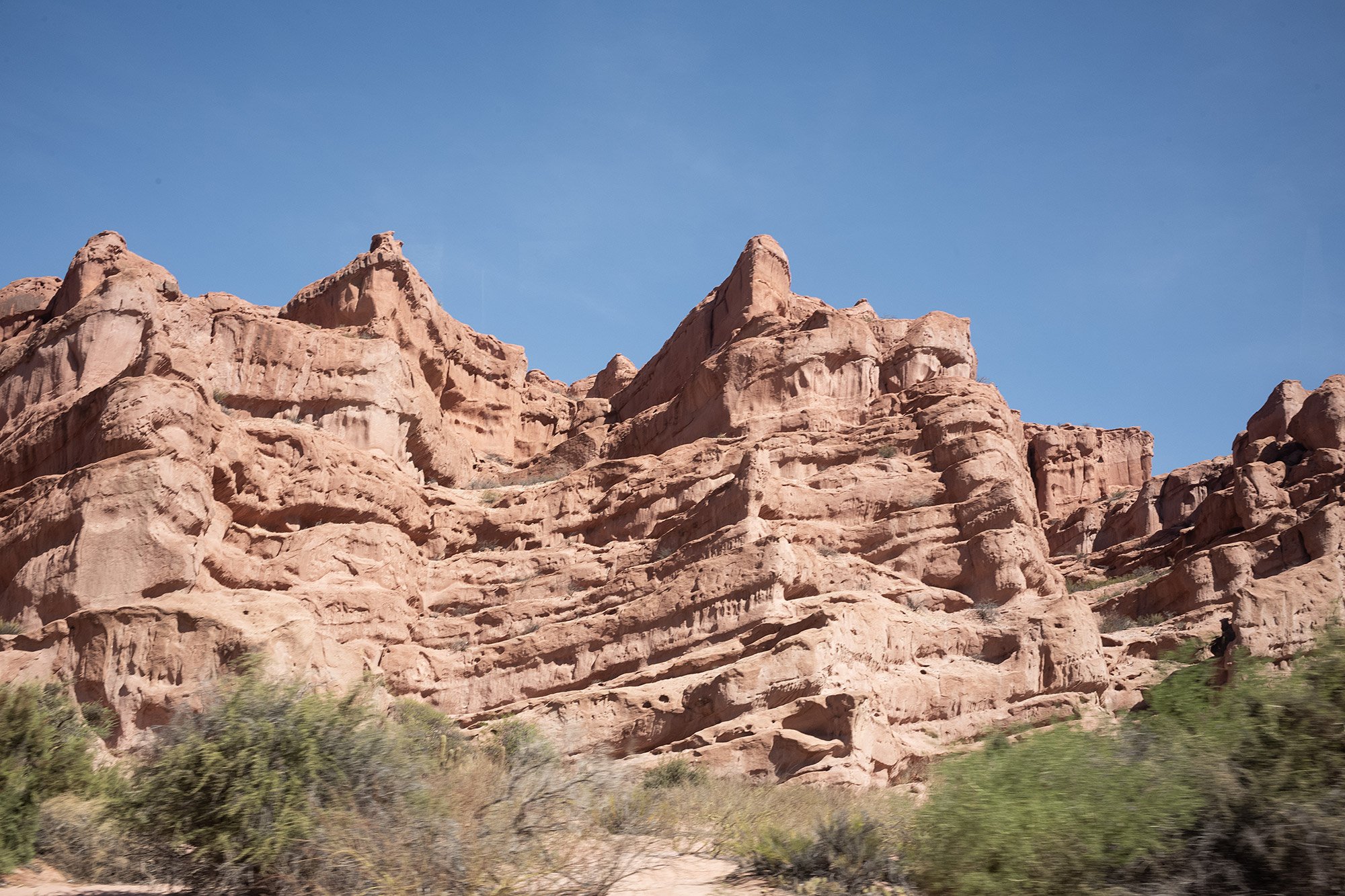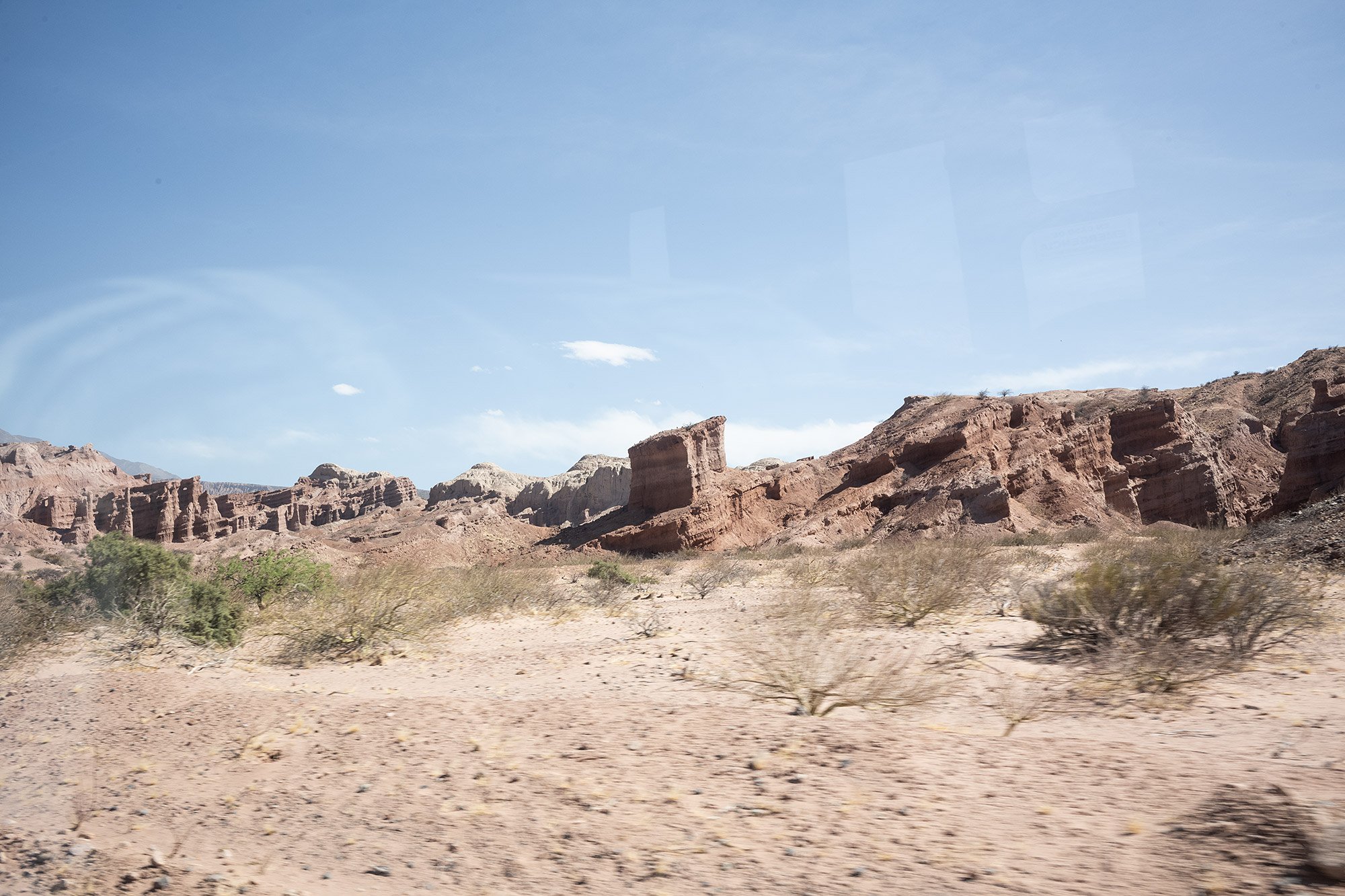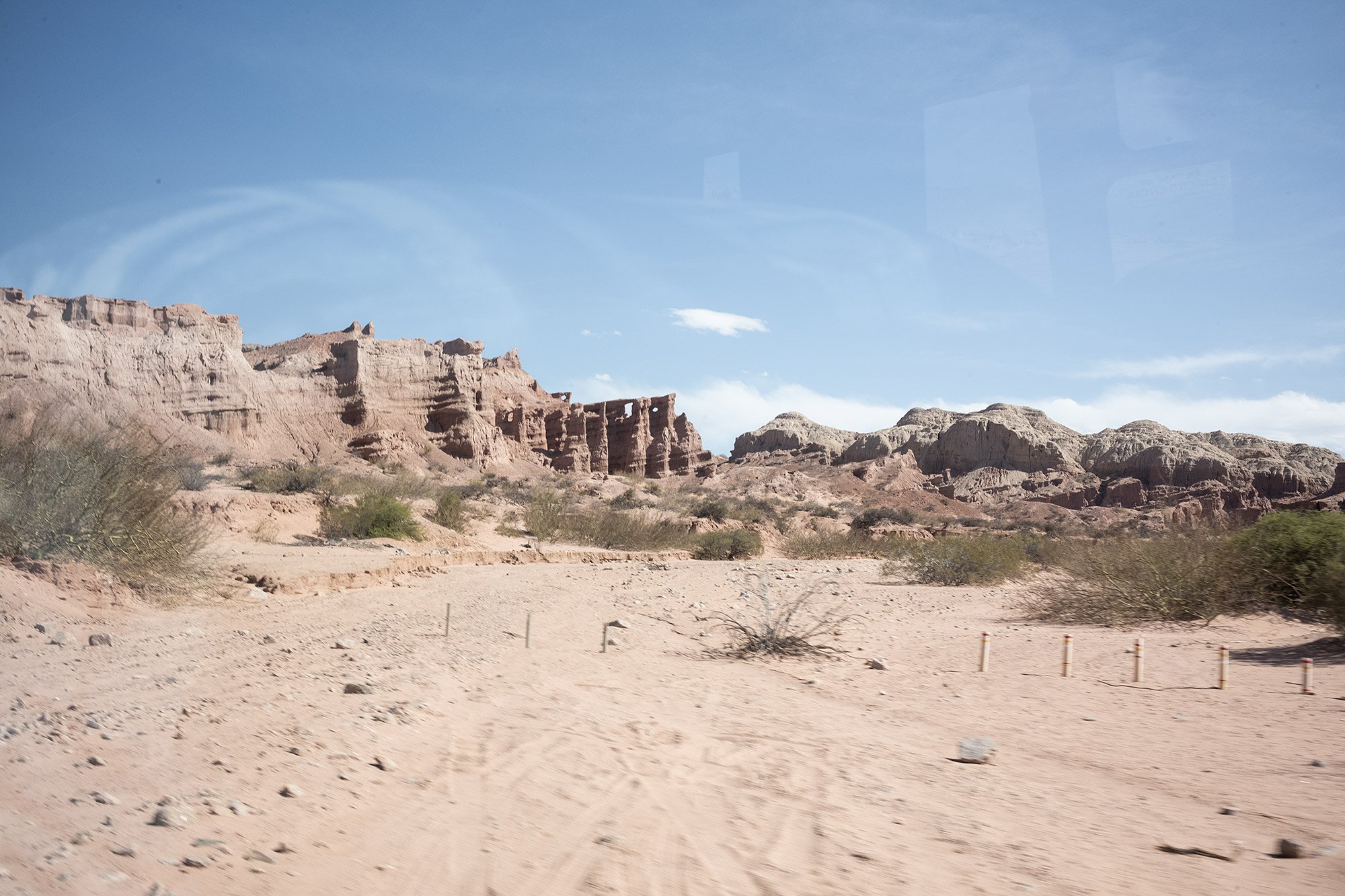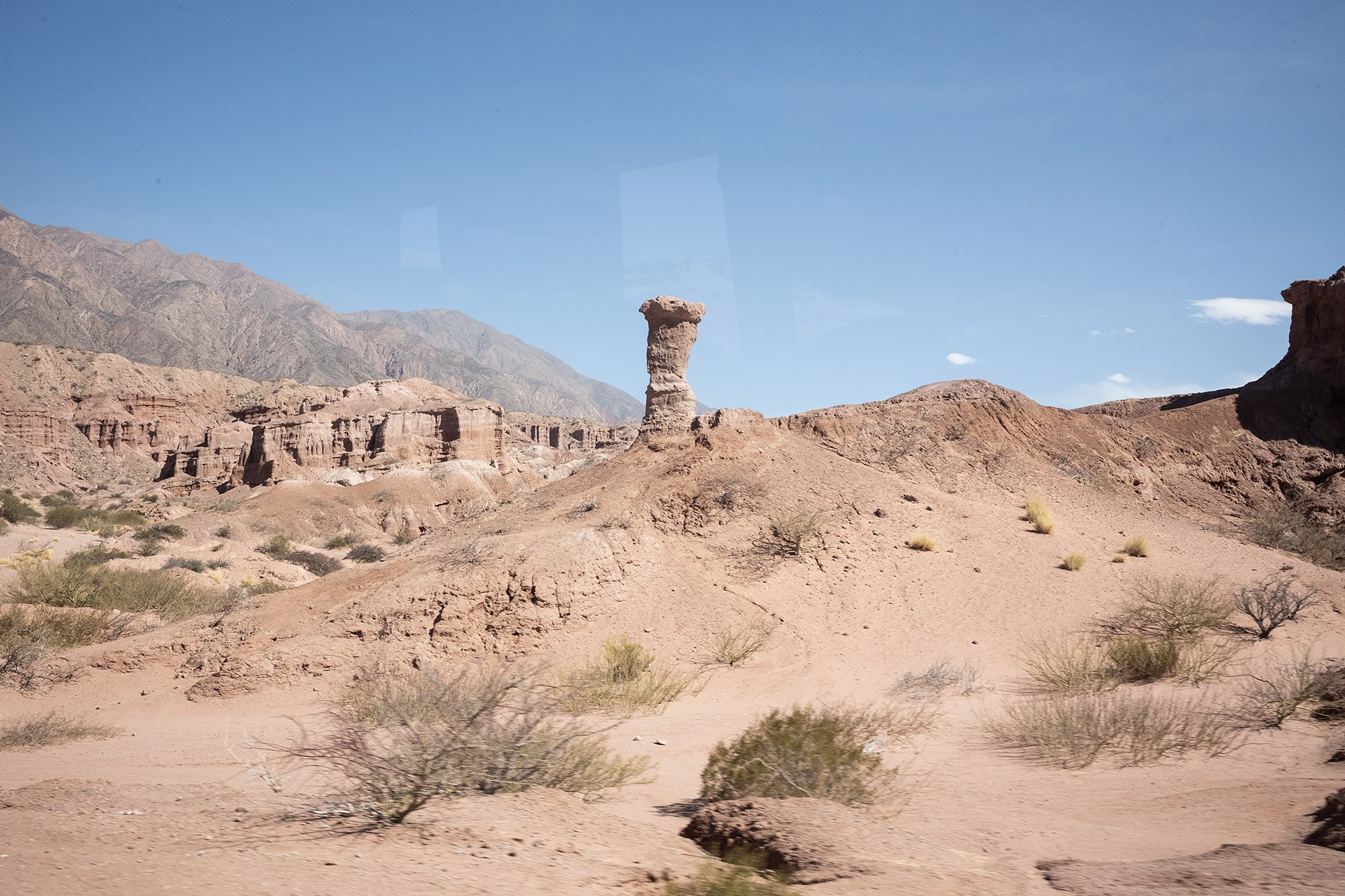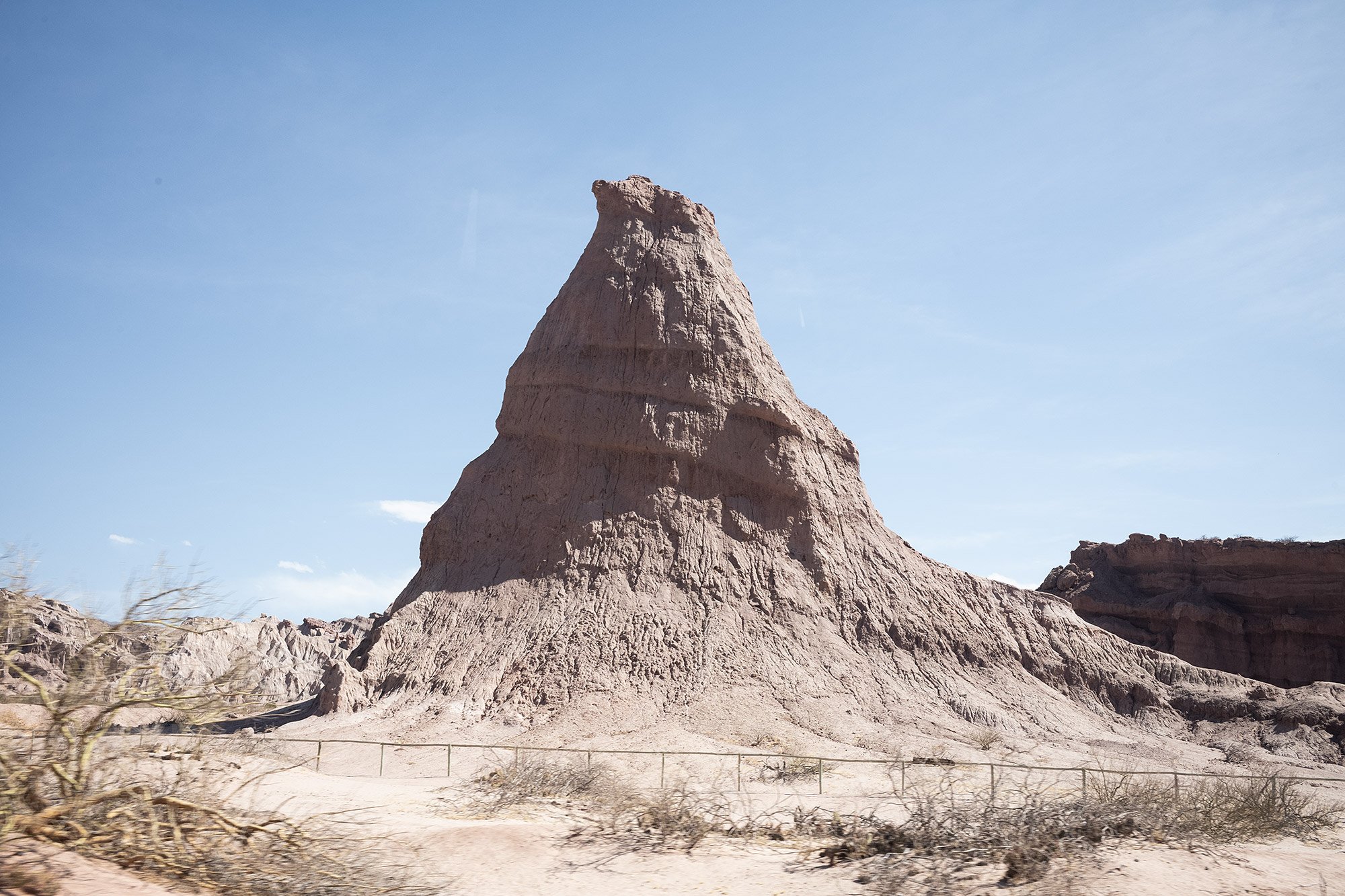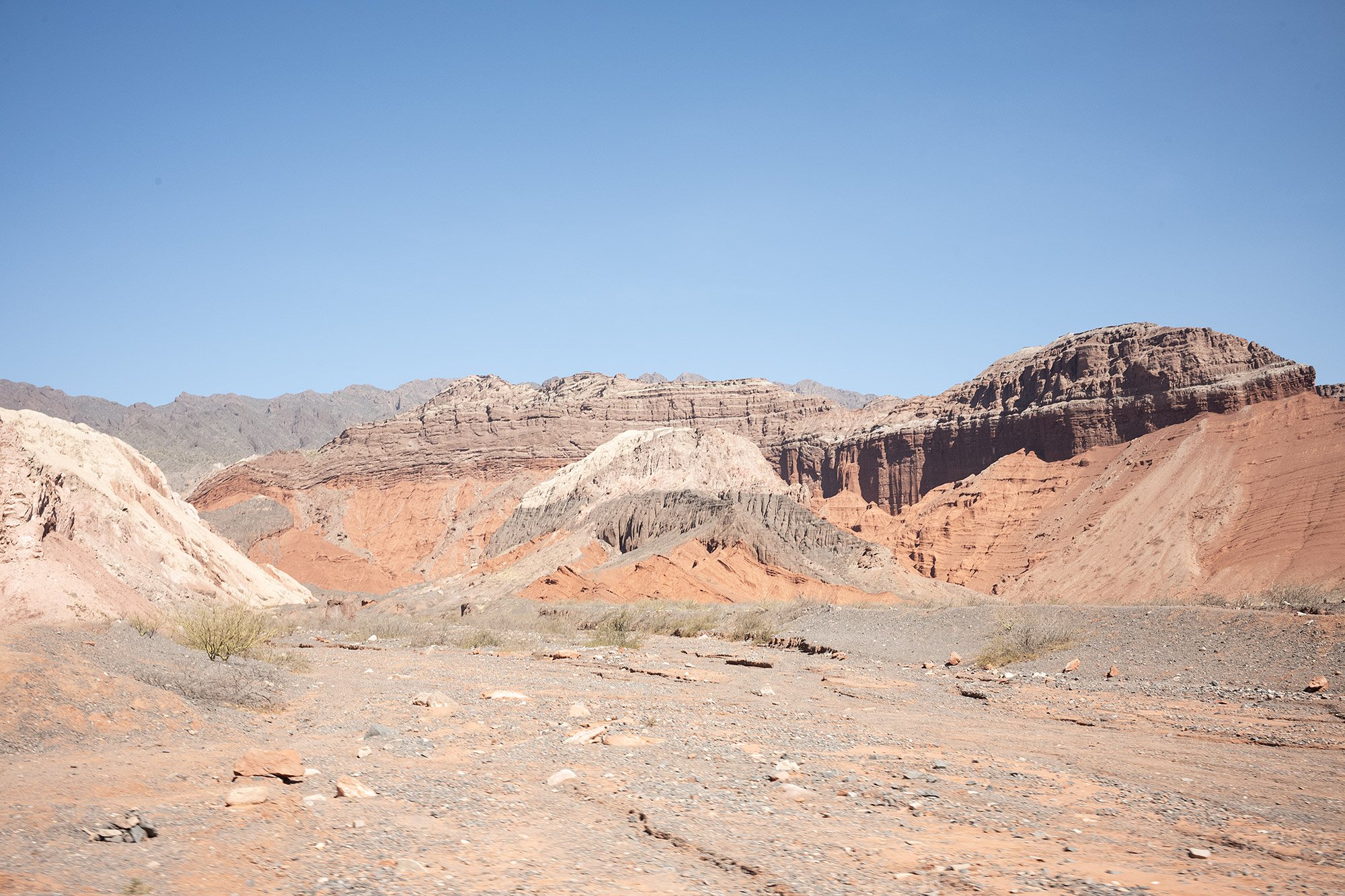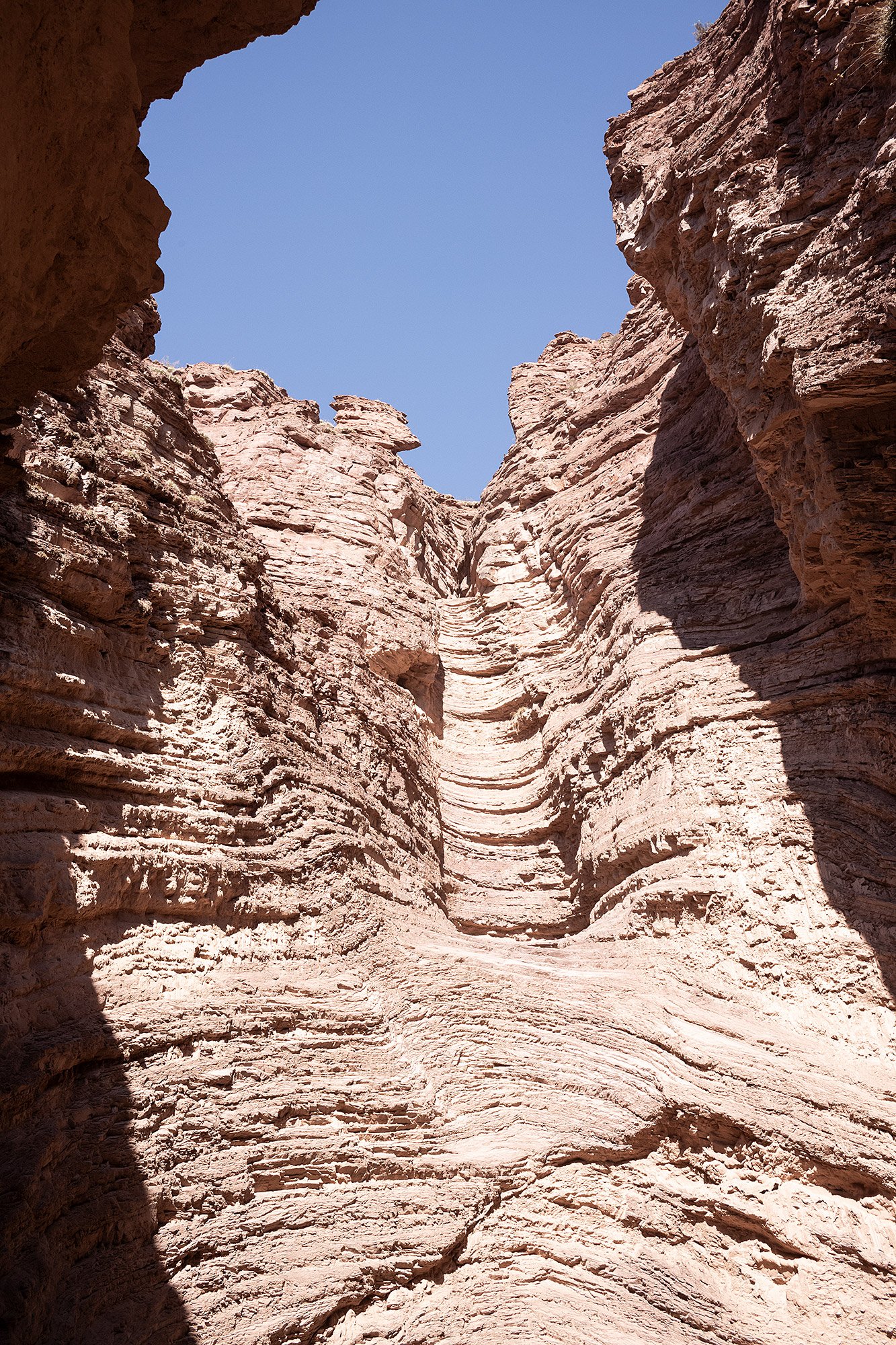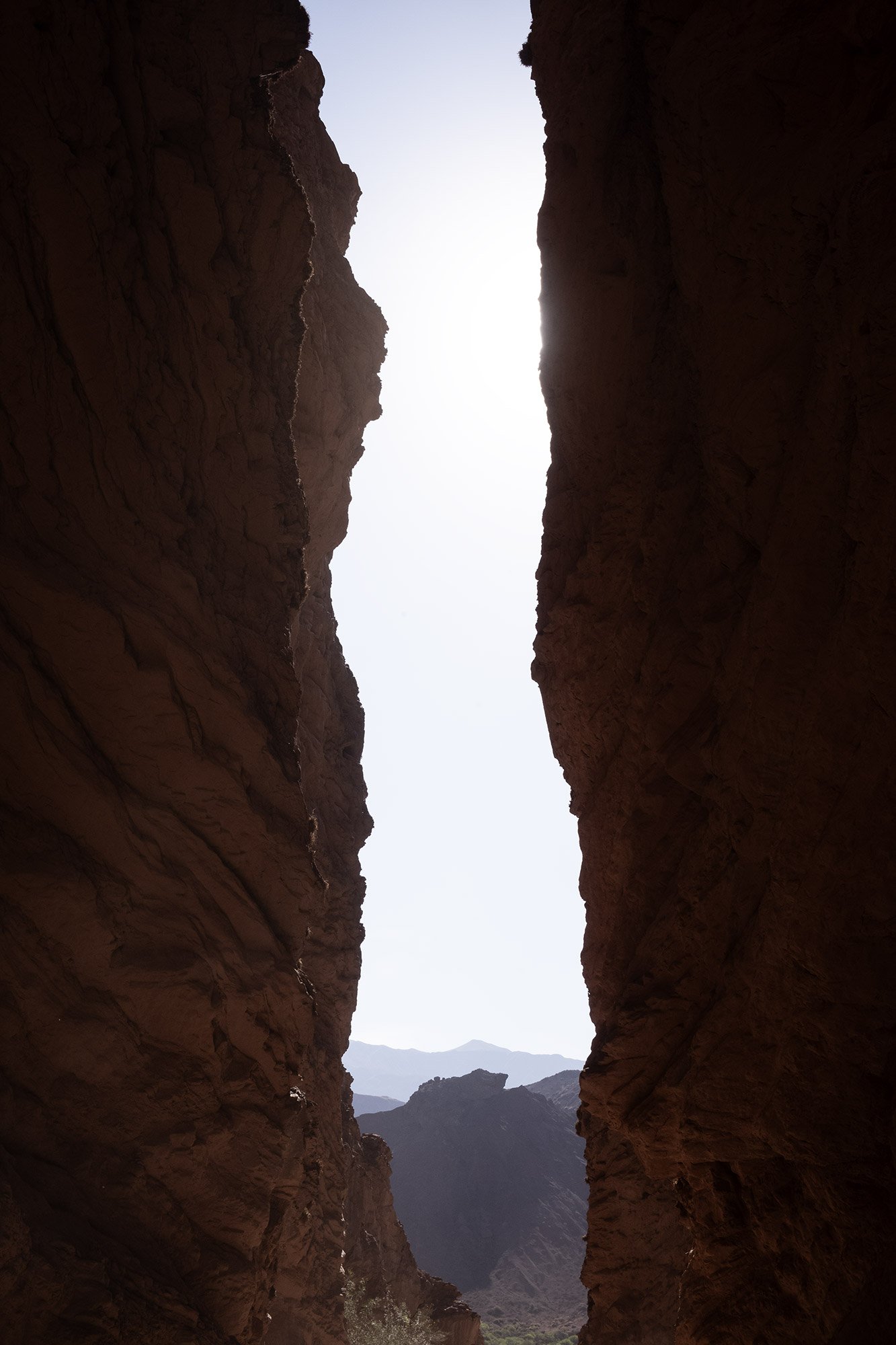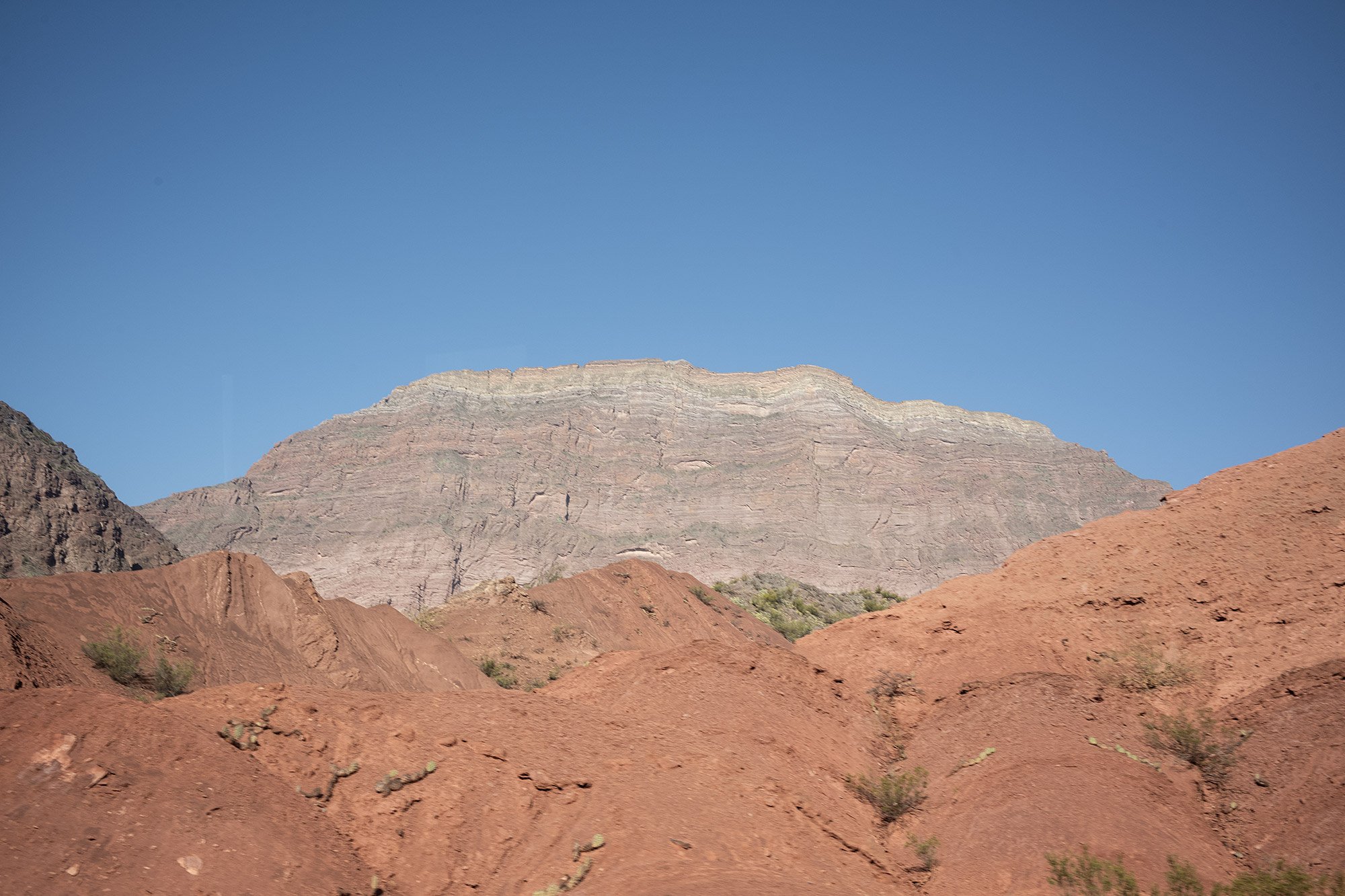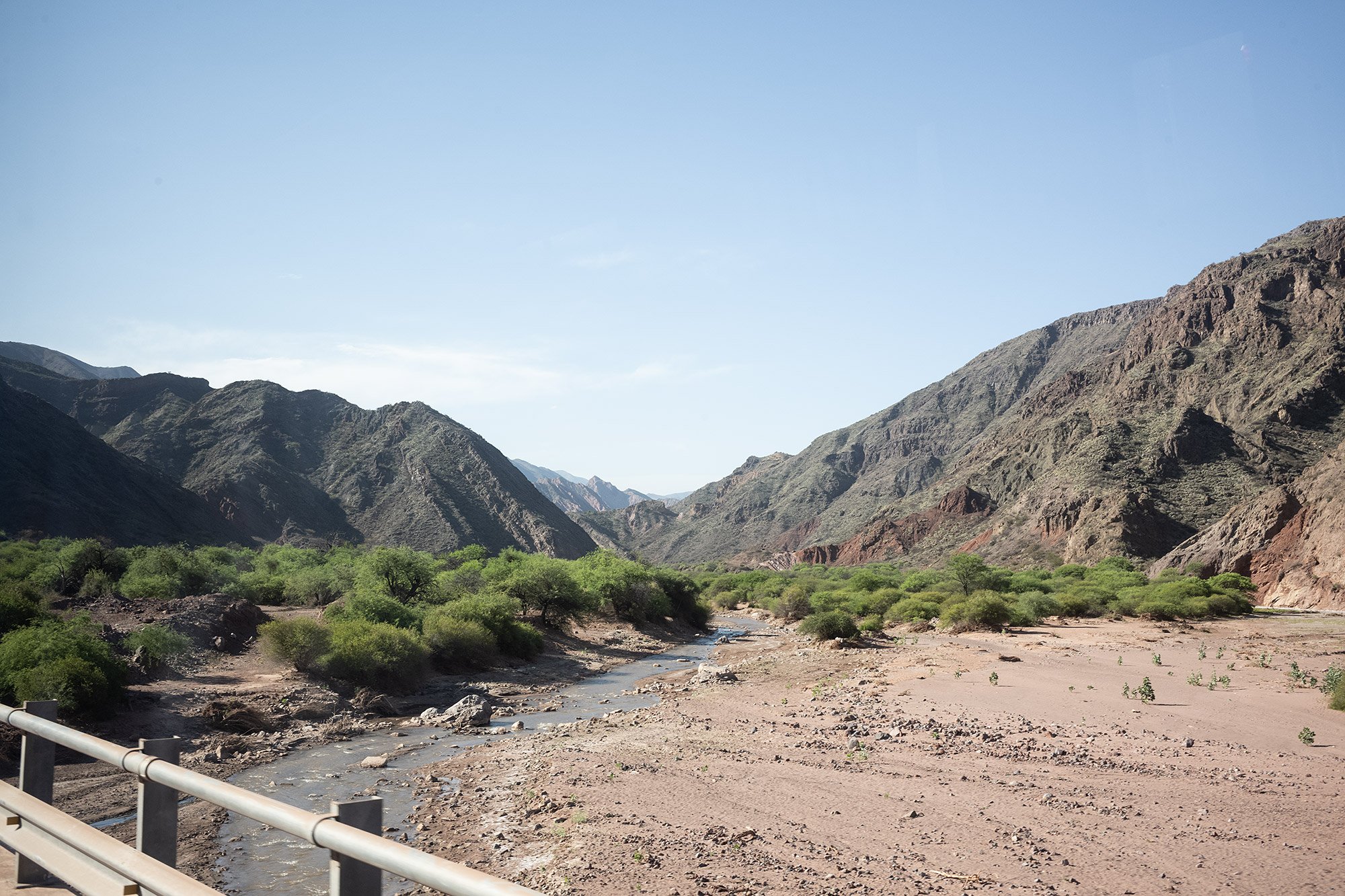A day trip from Salta to Cafayate.
One of the themes of this year’s travel has been rocks. I spent a week looking at rocks in the western United States in May, and then spent another week looking at rocks in the Atacama desert in September. Today, I spent the day on a bus tour from Salta to Cafayate through canyons and valleys of rocks.
I woke up before the dawn. The shop across the street lit the pavement as the sun spilled light across the sky. The hilltops glowed and I could see the lights lining the road to the top of Cerro San Bernardino.
By the time I was picked up, the sun was up and the day was slowly warming. The streets were bright when the bus arrived and we drove around Salta picking up additional tourists before we began the three-hour drive south to Cafayate, small town making a name for itself as the center of one of the top wine-growing regions of the country.
We sped south along the highway past fields and farms as the guide spoke of the history and geography of the region. She spoke in Spanish. I was tired and took in about 5% of what she was saying. I napped.
At one point she spoke of the various films that had been made in the region and my interest was piqued. A week ago at lunch one of my companions had suggested a the trip to Cafayate. I had mentioned I was heading to Salta and he said it was worth the drive south. Look at the canyons, stop to take pictures at the bridge featured in the film Relatos Salvajes . . . The next day I watched the film to see what he meant.
Right before the bridge, the road forked. The old road went over the bridge. As we crossed the new bridge I could see people posing and taking photos of each other. As we drove past I saw the hulk of a burnt out car resting by the side of the road; ostensibly the wreck featured in the film.
The driver slowed on the bridge so we could get a view, but we didn’t stop. Our next stop was the Devil’s throat, a curved rock formation off the side of the road.
We alighted and walked the short path to the entrance. It was well-visited with people scrambling up a steep slope of rock to post for photos. The sun had crested the canyons and sat just above it, backlighting all of our photos and beating down upon us as we gazed deep into the canyon.
We drove on. Our next stop was the Tres Cruces mirador. From there, we had an unspoilt view of the valley and the road to Cafayate. Greenery lined the river banks, flanked by red rocks and peaks.
We continued driving past rock formations, following the valley as it wound its way south. At one point the guide told us to look out the right. There was a rock in the form of a frog. That’s our el Sapo, the guide said. We didn’t stop.
We next stopped at a picturesque valley where the rocks had been eroded into stepped layers. From a viewpoint I admired one of the plants that I had seen growing throughout the area. The green branches were especially striking against the sandy backdrops against which it grows.
Driving on, the guide told us to look out towards the right to see an arch that had been eroded from the rock. There were a few in the area spread around, and as I looked my mind cast back to the day we had spent in Arches National Park and our pre-dawn hike to the Delicate Arch.
Just outside Cafayate we stopped at Vasija Secreta, the oldest winery in Cafayate. It also seemed to be the most touristed winery in Cafayate as a number of buses and vans were already parked outside. A guide at the winery walked us through the main fermentation room and a small museum before pouring us a glass of fruity torrentes and a glass of a very dry malbec. They were ok.
In Cafayate we were on our own. The tour company had made reservations at a restaurant on the square, but I wandered off with an Italian, a Mexican, and an Argentine to search out something else. The Italian man was on an open-ended tour of Argentina, delivering on the promise of a grandmother’s wishes for him to visit Tierra del Fuego. He was making his way from north to South. The Mexican woman had met the Argentine woman in Tucumán, where they were both studying as part of a hospitality program there.
As we walked the Mexican woman spoke of the differences between Mexican and Argentine Spanish. The word for her favorite drink in Mexico (a honey concoction) was the same as the word for vagina in Argentina. Imagine the surprise on the faces around her when she said she wanted and longed for her drink.
Later, she’d tell us the story of the hotel they stayed in the night before. They had been stuck in Salta after missing their bus back to Tucumán and all the hotels had been booked up for the holiday weekend. They finally found a hotel they thought haunted for how old it was (and the clientele were). When checking in the clerk looked at them askance, asking if they were a couple. No, they answered truthfully. They were students trying to get home to Tucumán.
They were given the room but whispers abounded, heard through the thin walls. Whispers they entertained by declaring their love for each other loudly.
We were ultimately unsuccessful at the various parillas we tried. Either there was no room or the service was too slow. Eventually, the women went their own way and I shared a lunch of empanadas with the Italian before we wandered back to the main square to catch the bus. But not before checking out the Iglesia Catedral Ntra. Sra. del Rosario.
Leaving Cafayate, we drove past wineries before heading back into the arid landscape. I photographed various formations from the window as we passed them, too short on time to spend any time alighting.
Our last stop was at the amphitheatre, a curved canyon next to the devil’s throat. Inside, someone was playing music from a speaker and the sounds echoed through the space.
From there it was a few hours back to the city. I bid my companions goodbye at the main square with promises to keep in touch. The Mexican woman told me she’d share her favorite places in CDMX. I told her I’d text her when I arrived in December. The Italian was off to San Pedro de Atacama on an 11 hour bus ride leaving at 0100. The two women were headed back to Tucuman on a 2200 bus. I wished them luck. 🇦🇷

